






INSIDE
How does an 84 year old capture the hearts of Catholic youth?
Pages 10-11
Just another music festival?
Here’s what WYD is really about.
Page 6
Rain unleashed on heat parched pilgrims. Hope for our times?
Pages 8-9


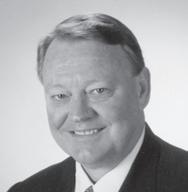

Editor
Rosengren office@therecord.com.au
Journalists
Mark Reidy mreidy@therecord.com.au
Tim Wallace
Rob Hiini
Advertising/Production
Mat De Sousa production@therecord.com.au
Accounts
June Cowley accounts@therecord.com.au
Classifieds/Panoramas/Subscriptions
Catherine
Martinez office@therecord.com.au
Record
Bibiana Kwaramba bookshop@therecord.com.au
Proofreaders
Chris
Contributors
The
Website:

eFFORTS to lift staffing numbers in aged care are being helped by a vocational training programme involving Catholic school students. With a productivity Commission report estimating 3.5 million Australians will need aged care services by 2050, the training program known as the Aged Care partnership is connecting schools with leading aged care providers.
Year 11 students from Ursula Frayne and lumen Christi colleges have been
part of the programme since the beginning of the year. it offers a vocational pathway to careers in nursing, business administration and community services. Studying at Central TAFe, their traineeships will continue into 2012. The Catholic education Office of WA said the partnership aimed to raise awareness of the aged care sector and its growing skills shortages. it involves Brightwater Care group, Uniting Church homes and Catholic homes inc, among others. The productivity Commission’s recent report, Caring for Older
Australians, notes the challenge posed by both “a relative fall in the number of informal carers and a need for more workers”.
At the end of June 2010 more than 160,000 Australians were in permanent residential care, the report said, with most receiving high-level care.
The report says the sector faces steep and increasing demand for non-residential services. Workforce shortages in the sector were exacerbated by “low wages” and some workers had “insufficient skills,” the report says.
The plighT of hundreds of thousands around the world, and possibly thousands in Australia, exploited as commodities for sex work and other profit-making, has motivated 12 women religious to travel to Canberra to lobby for greater action on people trafficking.
The 12 women, members of the group Australian Catholic Religious Against Trafficking in humans (ACRATh), will spend the week from 21 to 26 August talking to politicians, diplomats, public servants, union officials and even church officials to raise awareness about the
7-31 World
25 Catenian
26 Awards
–
26-28 Parish
28 Solemn
Confirmation,
30 Little
–
31 Opening

issue. This is the fifth year the group has organised a delegation to Canberra.
Figures on the number of people trafficked into and within Australia are imprecise. A research paper from the Australian institute of Criminology in 2007 noted that official information on victim support and arrests indicated relatively small numbers, with intelligence assessments putting the total number of victims between 2004 and 2006 to be about 100.
The Victorian-based organisation Respect life, however, estimates that about 1,000 women in Australia are trafficked for prostitution every year – most of them from Asia.
3 Day with Mary, East Victoria Park – Archbishop Hickey
4 Re-dedication St Mary’s, Leederville – Archbishop Hickey
Mass, Southern Cross – Bishop Sproxton
6 Visit Kora Centre – Archbishop Hickey
8 Council of Priests’ Meeting, Cathedral Presbytery
– Archbishop Hickey, Bishop Sproxton
40th Anniversary Mass, Notre Dame Church, Cloverdale
– Archbishop Hickey
Few trafficking victims identified have conformed to traditional stereotypes of having been abducted or physically restrained and/or confined.
Rather, as a research paper published by the Queensland parliamentary library in June notes, in most cases “the restraint has been psychological through means such as threats of violence, requirements to repay a debt, isolation, manipulation of dubious or illegal migration situations, and a general sense of obligation on the part of the victim”.
The national chairwoman of ACRATh, Brigidine Sr louise Cleary, said the group’s meetings with policy makers would make clear some of the complexities of assisting trafficked people.
“ACRATh is concerned for the wellbeing of people trafficked into Australia, whether for sex work, for work in other industries, or for organ harvesting,” said Sr louise, who was recently elected head of the Brigidine congregation worldwide.
While acknowledging the work of the Australian government on human trafficking, she said more action was needed on several ongoing issues.
This included providing affordable housing for trafficked women waiting to give evidence against their traffickers. The group’s members knew of women who had returned to sex work to pay their bills while awaiting the trial of their traffickers.
Victims of trafficking also required access to financial compensation to assist them beginning a new life.
As well, trafficking prevention strategies required funding through Australia’s Overseas Development Assistance programme, with ACRATh keen to see the Australian government stick to its stated commitment to raise its development assistance to 0.5 per cent of gross national income (gNi) by 2015, and then to raise it to 0.7 per cent by 2020.
The government has allocated $4.8 billion to development assistance for the 2011-2012 year, which it estimates to be 0.35 per cent of gNi
When John Doherty first heard the presentation by Perth’s archbishop at the University of notre Dame in Fremantle on 7 June, he was inspired on many levels.
For Mr Doherty, Archbishop Barry hickey’s speech on The Church and the Modern World not only reflected the timeless wisdom of the Catholic faith but also confirmed the essence of the Schoenstatt Movement of which he is a committed member.
The archbishop’s talk, based on the 1965 Vatican II document Gaudium et Spes, urged Catholics to not only fully involve themselves in
SeTon Catholic College is turning a private pastime into an act of kindness in someone else’s life.
The college launched its fourth annual Knitting for the homeless campaign on 2 August during homeless Week, presenting 13 hand-knitted blankets to St Patrick’s Community Support Centre in Fremantle.
The campaign is the brainchild of several enthusiastic knitters on Seton’s staff who fundraise within the college to buy the 8-ply wool and size 8 knitting needles required to make the blankets.
St Patrick’s manager Lynda Diagne said the blankets are a great help to her organisation.
“In winter, it can get incredibly tough sleeping on the streets or in some form of shelter”, Ms Diagne said. “We gratefully receive these handmade woollen blankets to distribute to our clients who are sleeping rough.”
This year, over 25 students, staff, parents and grandparents have signed up to knit, creating squares of plain knitting which
the life and worship of the Church, but to engage and reinvigorate the world around them with the joy and hope of Jesus’ message of love.
Mr Doherty, chairman of the co-ordinators committee for Schoenstatt’s Western Australian branch, told The Record the call to take Christ into the world through “everyday sanctity” was one of the foundational principles of the international movement.
“Schoenstatt is a way of life which forms every aspect of our daily living”, he said.
“It is a new and dynamic way of life responding to the needs of a changing world, and in particular helping to counteract the growing tendencies towards conformity
and materialism. We strive to carry out the worldwide mission of the church by laying a firm foundation of faith within our families.”
h e said members of the movement were encouraged in the development of their faith through personal and group formation providing the opportunity for prayer, discussions, self-education and support, weaving insights of Catholic theology and pastoral teaching with those of modern disciplines.
Schoenstatt, which was founded in Germany in 1914 by Father Joseph Kentenich, seeks to bridge the gap between people and God by restoring Jesus to his rightful place. The movement began in a small
chapel in the Schoenstatt Valley near Koblenz when Fr Kentenich and a group of seminarians prayed to Mary, the Christ-bearer, to make the chapel her shrine – a place of grace and pilgrimage.
There are now almost 200 replica chapels in 40 countries, each a spiritual centre for the movement, providing people from all walks of life with a place of prayer and pilgrimage and an opportunity to receive the graces of inner transformation.
All are invited and encouraged to visit the WA Schoenstatt shrine in Armadale, which was opened and blessed by Archbishop hickey in 1991, to be open to the many graces on offer.
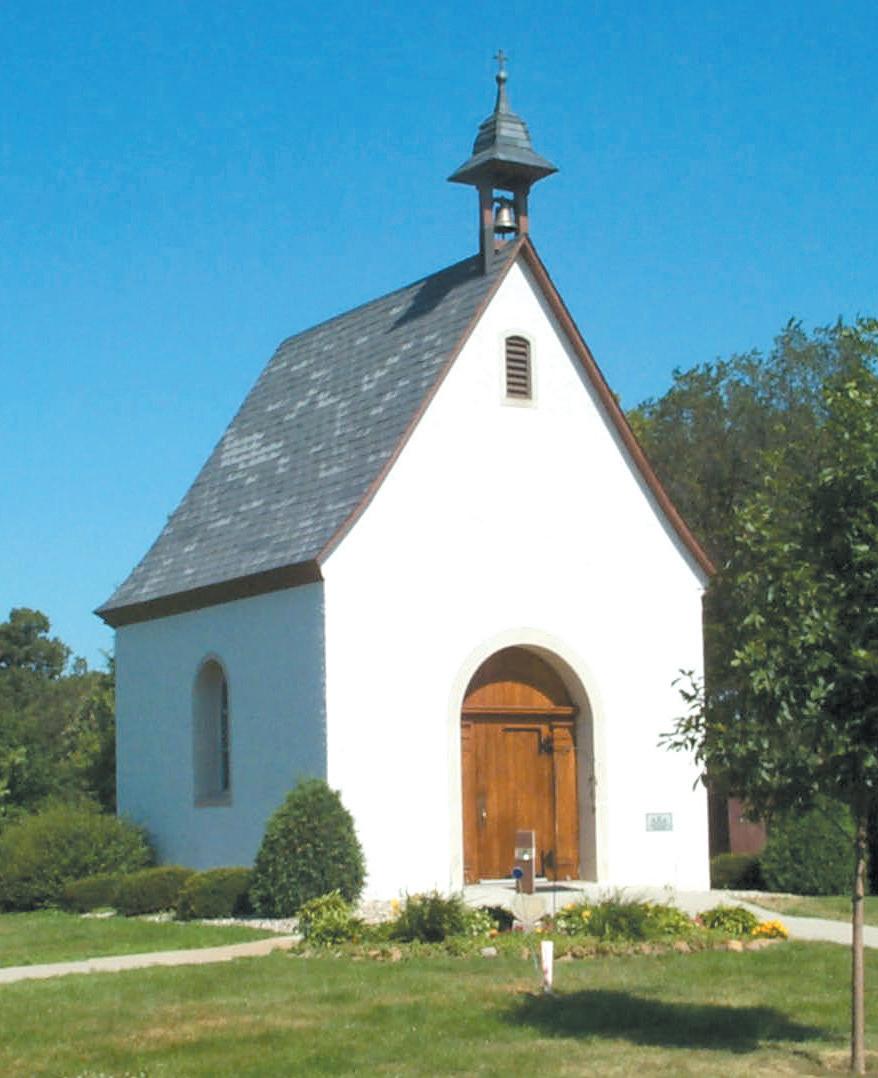

are then knitted into strips and stitched together to form colourful blankets.
every winter, male and female students meet in a classroom on Wednesday and Friday lunchtimes
More than 150 people gathered at the University of notre Dame on Monday, 15 August to hear Una Glennon describe how she came to terms with the murder of her daughter Ciara 14 years ago.
Mrs Glennon said she hoped writing a book about the personal journey through her grief and sharing that story might bring comfort to others who had also experienced great tragedy. She said each person grieved in their own way and it was often a very lonely and isolating journey. But she believed it was a path all people needed to take to find peace in their lives after times of suffering.
“There is solace and even healing in the realisation that another’s experience confirms and affirms that of our own”, Mrs Glennon said.
“Acceptance of the universality of loss and reading about another’s actual experience of loss makes us
feel less isolated and alone. It give us permission to become more open and journey further into our own experience. only when we enter deeply into our grief, and absorb it as part of our very being, will any kind of peace come.”
People experienced grief not only from the death of a loved one but also from marriage breakdown or the loss of their job or home.
“When we are given the courage to enter deeply into and to feel our pain, we discover that beneath it is a place of enduring love, compassion and quietude. We learn the event that brought us so much pain ultimately opens a portal into a place of tranquillity”, Mrs Glennon said.
“Thus, we emerge from suffering with increased capacity to live each day in peace and gratitude for the gift that life is.”
She concluded: “A tremendous growth has taken place during my long winter of exile and I am grateful for all that I have learned.”
to work on their “plains” and “purls” - the needle movements and stitches used to make their knitted squares. not knowing how is “not a problem,” a college representa-
tive told The Record, with staff members always on hand to share the secrets of their own knitting prowess with volunteers. While primarily a winter activity for the school, there are several
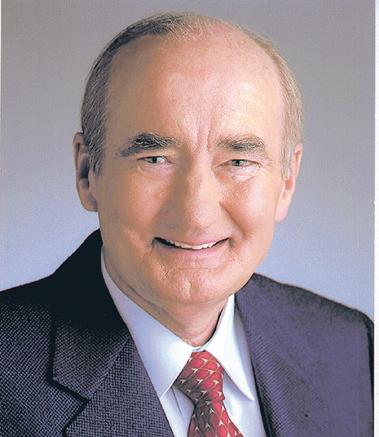
college families who knit squares throughout the year.
Seton Catholic College invites any Record readers who want to assist the knitting campaign to contact the school on 9314 1816.
The fronTline of ChristianMuslim dialogue is a world away from Guildford, but one of that field’s leading practitioners recently stopped by St Charles’ Seminary to share his insights.
Benedictine abbot Timothy Wright, spiritual director at The Pontifical Beda College in rome, was in Western Australia for the annual retreat of Benedictine monks in new norcia.
following the retreat, Abbot Wright addressed the seminarians of St Charles on what he described as the four essential elements and practices of priestly spirituality: the Divine office (the Church’s compendium of psalms and prayers prayed at specified times of the day; the Lectio Divina (an ancient and prayerful method of reading Scripture); contemplative prayer; and the sacrament of eucharist.
The rector of St Charles’ Seminary, Monsignor Kevin long, described the address as “stirring”.
Abbot Wright was the head of Ampleforth Abbey in Britain from 1997 to 2005.
on several occasions – in 2002 and 2004 – he has spoken at the imam Khomeini education and research institute in Qum, iran on the subject of Benedictine spirituality and conscience in the Catholic tradition.
holding degrees in geography and divinity, he is also the

co-author of Doing Business with Benedict: The Rule of Saint Benedict and Business Management, about how to practically apply Benedictine principles to business practice. he
MonSiGnor Vince redden figured there had to be something he could pass on to St Charles’ seminarians – even if it was just advice about not making some of the mistakes he had made.
having just celebrated 50 years of priesthood, the Sydney archdiocese’s vicar for clergy said he wanted to show camaraderie with Perth’s future priests over the six days of the retreat he gave in July.
“Jesus is a resolute, demanding saviour who wants a similar commitment from his priests and seminarians particularly. it is a request: follow me”, Mgr redden said. he therefore wanted to be with the seminarians “as a fellow traveller – fraternal, supportive, encouraging, an instrument of God and Church in their lives”.
he sought to remind them of their future sacramental char-
acter through ordination: “their assimilation into Christ the priest … called to be living models of Christ’s priesthood”.
“The practical side of all of this,” he said, “is total commitment to one’s priesthood and total pastoral availability.”
his invitation to give the retreat was the result of a meeting with St Charles’ rector, Mgr Kevin long, in Sydney in mid-2010.
he described himself as “somewhat amazed at the invitation”.
“in the past, i have conducted retreats for priests in various dioceses in Australia, but never seminarians,” Mgr redden said.
After thinking “long and hard” about what he should say and speaking with the rector, Mgr redden decided on painting a straightforward picture of what lay ahead for the seminarians –
has also spent time ministering at the Cenacolo Community in northern italy, where a Catholiccentred drug rehabilitation programme is run (as profiled by Record journalist Mark reidy in
“The road out of hell” on 22 June 2011).
following his visit to St Charles’, Abbot Wright travelled to Melbourne to give a retreat to Cistercian monks.
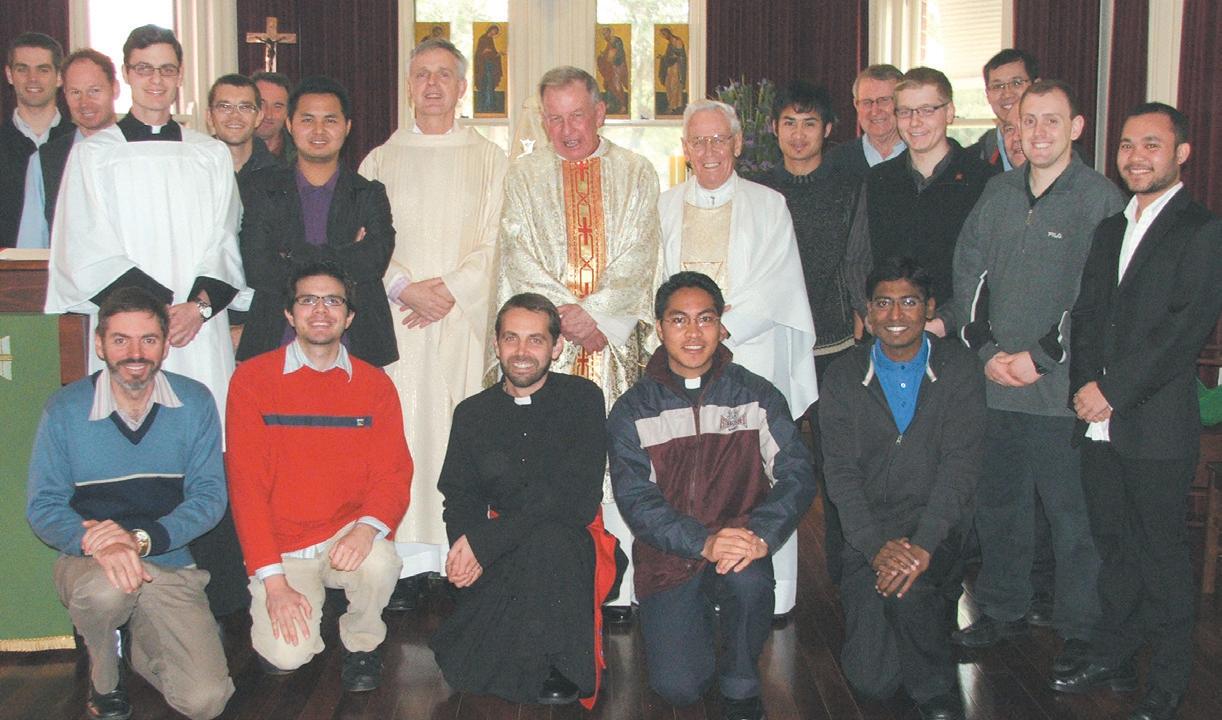
the life of an ordinary diocesan priest. While in Perth, Mgr redden was also able to catch up with an old classmate of his in first year formator father John o’reilly. Both men graduated from the now defunct St Patrick’s Seminary in Sydney, though fr o’reilly was some years ahead. he said he was impressed by the seminarians’ commitment to

prayer. each day of the retreat they sang parts of the Divine office –the Church’s special compendium of psalms and prayers – before the Blessed Sacrament.
“i found it most uplifting to be associated with the St Charles’ Guildford seminarians, with their high level of commitment of training for the priesthood,” Mgr redden said. Robe R t Hiini
AS TeACher attrition rates nudge
40 per cent within five years of graduating, notre Dame University (UnDA) in fremantle has come up with a novel way of keeping teachers in the game.
Thirty pre-service teachers spent two days at Serpentine r etreat Centre to develop skills and techniques to manage retreats themselves as well as other activities conducted outside the classroom.
The retreat was an opportunity for reflection on teaching as a vocation and was part of the university’s r etreat l eaders Training Programme ( rlTP), encouraging pre-service teachers to explore core areas of faith, leadership and service.
one of the programme’s overseers, Associate Professor Chris hackett, said the rlTP calls on final year students to reflect on their own lives.
“Because of the challenges of teaching today, students entering
“Students entering the teaching profession can sometimes question the purpose of what they are doing.”
the teaching profession can sometimes question the purpose of what they are doing”, he said.
“research says that people who have a good reason for why they are in the profession and can identify how they can meet challenges, tend to commit themselves to teaching for a longer period.
“The retreat leaders Training Programme gives students an opportunity to consider those questions before they finish their degree”, Professor hackett said.
f ellow retreat organiser and U n DA alumni minister Tom Gannon said the training programme had the potential to improve the way retreat programmes are organised and conducted in Australian schools.
“not only does it provide an opportunity for alumni to share their experiences at notre Dame, it also allows them to give our future teaching graduates some helpful advice in conducting successful outdoor activities for their students.”

The federal government should scrap its plans to warehouse asylum seekers arriving by boat in Malaysia and Manus Island before more refugees suffer needlessly in mandatory detention, says the national council of the St Vincent de Paul Society in australia.
a full bench of the high Court began a hearing into the legality of australia’s asylum seeker deal with Malaysia on 22 august.
regardless of the court’s decision, the Catholic charity agency
auSTralIanS from all backgrounds are invited to join in celebrations for Migrant and refugee Sunday on 28 august.
Special Masses and events will take place in Victoria Park, north Perth and Girrawheen with migrant and homegrown australians giving life to this year’s theme, One Human Family St Joachim’s Parish, Victoria Park will hold a special Mass for Migrant Sunday at 12pm led by a large filipino cohort.
filipino and long-time Perth priest father armando Carandang will celebrate the Mass, along with Perth’s vicar for migrants, fr Blasco fonseca.
across town, the north Perth Social Justice Group will mark refugee Sunday with a Mass at 10.30am at the redemptorist Monastery, aided by the talents of a Sudanese choir and followed by a sausage sizzle.
out east, our lady of Mercy, Girrawheen will celebrate Mass at 9.30am with an african choir hailing mainly from Burundi.
fr fonseca says there is great richness in the plurality of migrants in the Perth archdiocese.
“Migrants bring many gifts. Migrants here in Perth have contributed to the vitality in certain parishes and then there are their own vibrant communities”, fr fonseca said.
Migrant chaplaincies and communities are important in countering the loneliness migrants
said the federal government could choose to end what it called “a cycle of punishing asylum seekers”.
The federal l abor government has embraced the policy of moving asylum seekers to offshore detention camps – a practice initiated by the howard coalition government –as a means to combat people smuggling and deter people from risking attempts to reach australia by boat.
Both of australia’s major parties have similarly accepted the policy of mandatory detention, which
began in the early 1990s under the hawke labor government, on the same grounds.
“It is never too late for australia to rethink its position on human rights,” said the chief executive of the St Vincent de Paul Society in australia, John falzon.
“It could be done today. The St Vincent de Paul Society is calling on both the government and opposition to abandon their policies of offshore processing and mandatory detention.”
“We welcome those refugees living in Malaysia, some 4,000 people who were guaranteed settlement under this deal, but deplore the government’s plan to conduct a people swap. “People fleeing persecution have a legitimate right to seek asylum in our country. The continued mandatory detention of adults and particularly, of children, is of deep concern to society members.”
The St Vincent de Paul Society’s national president, a nthony

can feel in moving to a new country, he said.
Perth is abundantly blessed with migrant groups who meet regularly, including Indonesians (applecross), Vietnamese (Westminster), Croatians (north fremantle), Chinese (Como), Sudanese (Westminster), hispanics (Mosman Park), Koreans (Myaree), Tamils (langford), Poles (Maylands), ukrainians, Slovaks Mauritians, Maltese and filipinos, amongst others.
Migrant and refugee Sunday caps off Migrant week (21-28 august) during which parishes were invited to highlight the presence of migrants and refugees in their midst, as well as exploring ways to welcome and incorporate them into their communities.
The annual Ave Maria recital in honour of of our lady’s birthday, a concert by candlelight with the acclaimed u Wa Winthrop Singers, the annual recommissioning of the cathedral choirs, and an afternoon of community singing are the highlights of the music programme being presented at St Mary’s Cathedral in September.
The Ave Maria recital of various versions of the most famous prayer to our lady, on Sunday afternoon, 11 September, will feature cantors d aniel Mullaney and Catherine Campbell accompanied by the cathedral’s organists. admimssion to the performance is free.
The “Chapels of St Mary’s by Candlelight” concert on Sunday evening, 18 September, will include performances of allegri’s Miserere, Palestrina’s Stabat Mater and Britten’s Missa Brevis. The cost of admission is $25 ($20 conces-
sion) with tickets available through B oCS (phone 9484 1133 or www. bocsticketing.com.au).
at the annual recommissioning Mass for the cathedral choir and admission of new choristers on Sunday, 25 September, cathedral choir probationers (trainee choristers) who have passed their assessments to be admitted to the choir will be presented with their choir robes and badges. They will then sing their first solos in St Mary’s Cathedral.
The community singing event on Sunday afternoon, 25 September, will include a session of song in the cathedral followed by afternoon tea in the cathedral’s parish centre and adjoining courtyard. The cost is $10 adults and $5 children/concession. Please register at cathedral.music@ perthcatholic.org.au.
a ll proceeds go towards the cathedral’s fundraising appeal.
Thornton, argued that far from being a “backflip” by the federal government, a decision to scrap the Malaysian deal would be a welcome act of compassion.
“It would give us all hope that australia’s international reputation as a fair and just society can be reinstated and hope for families and unaccompanied minors who make the journey to this country, often from war-torn and striferiddled homelands, seeking a place of safety”, Mr Thornton said.
renoVaTIon of St Mary’s in l eederville has survived the sad passing of the original heritage architect. The church is set to reopen on 4 September.
Michael Broderick passed away during the church’s three-month renovation but was succeeded by his son eamon.
The church shut its doors for the work on 1 June and will re-open when archbishop Barry hickey rededicates it in a special ceremony organised by Sr Kerry Willison rsm of the Centre for liturgy.
Work on the heritage-listed building included installation of a new roof and 14 light pendants, specially designed to match the church’s existing aesthetic.
also included was sanding and restoration of the blackbutt parquetry and refurbishment of pews to remove graffiti.
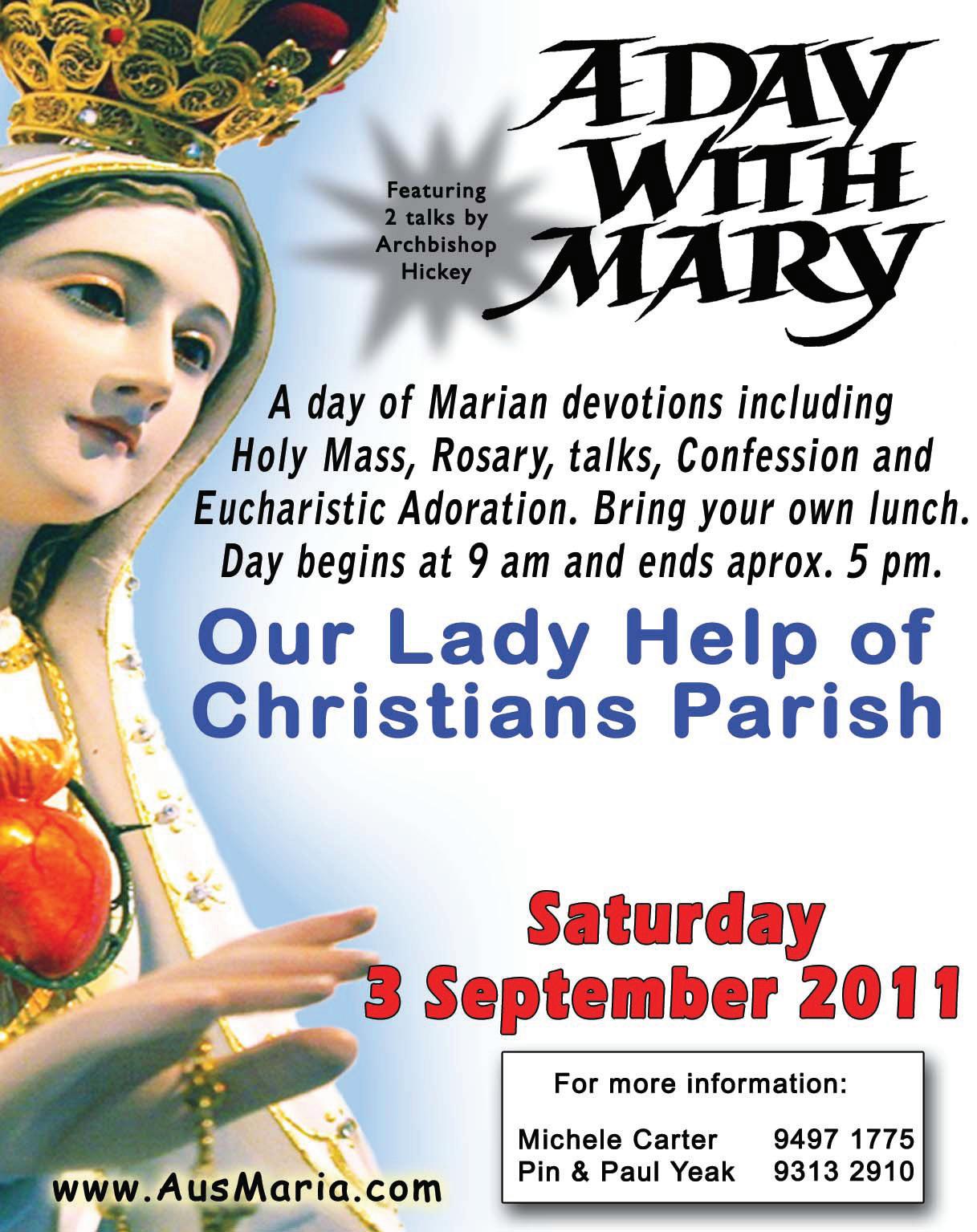
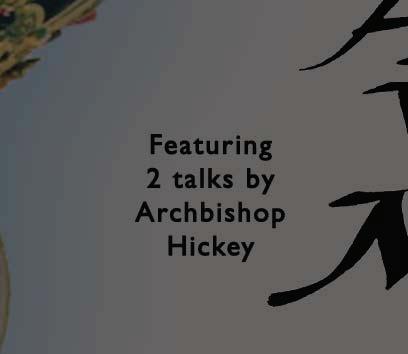

So the secular media doesn’t get World Youth Day. Meanwhile, the Israelis and the Palestinians are still going at it and the world enters yet another week perched on the precipice of financial armageddon. So what else is new?
But then, for the secular news media, “what’s new?” is the question. And as the world’s most respected Catholic journalist, John L Allen Jr, points out, the honest answer when it comes to WYD is, “not much.”
every two to three years, hun-
dreds of thousands, usually more than a million, “young” Catholics (read: anyone under 40) swarm the appointed host city in anticipation of the holy Father’s arrival.
For many Catholics it is something extraordinary. It has been for me; I have been to three World Youth Days (Rome, Cologne, Sydney) but from the news media’s perspective there’s nothing “new” about it.
What is new this time around is the stated reason for anti-WYD protests, if not the usual make-up of the typically green, anarchic rent-a-crowd.
With the spectre of debt con-
tagion hanging over european markets, the cost of state support for the event was at least as significant an issue as it was in Sydney, although less justified, perhaps, if the Spanish World Youth Day organisers’ claims were true (they
enough. there were crowds; there were protests; the pope turned up. that’s about it for the outsider.
But the real significance of World Youth Day for Catholics is beyond the comprehension or inclinations of the secular media.
said the event was self-funded except for what the state spent on security).
From the scant coverage I heard – mainly via the BBC and the ABC’s Radio National - the reports were, more-or-less, fair
to John Allen, the growth and success of World Youth Day is evidence of the rise of what he terms “evangelical Catholicism.”
this new phrase describes a new reality in the Church which Allen identifies as having three
pillars: “a strong defence of traditional Catholic identity … doctrinal orthodoxy and Catholic practice; a strong public proclamation of Catholic teaching with a view to transforming secular culture; and faith as a matter of choicenot inheritance; faith that ought to be propounded and defended.”
Allen says it would be wrong to write off evangelical Catholics as being “conservative”, noting rightly, “there’s precious little cultural Catholicism these days left to conserve.”
“For today’s younger Catholics, it’s more a matter of generational experience. they didn’t grow up
To be strong in faith, admit it is weak
the B e St way to maintain a strong faith is to acknowledge it is weak, Archbishop timothy Dolan told Australian World Youth Day pilgrims on 17 August.
the head of the US bishops conference, and one of the most influential bishops in the world, was giving one of the first catechesis at WYD to 350 young people from Australia, the US and Barbados, including pilgrims from Perth.
“When we admit our faith is weak, when we admit our faith is shaky, when we admit that our faith isn’t what it should be, actually we’re exercising it, and we’re making it more and more firm,” Archbishop Dolan said.
“Something tells me that’s why we’re here (at World Youth Day).
“our faith is weak, our faith is shaky. We want to be with a million other young people from around the world who love their faith and are trying to make it strong,” he said.
At San Ricardo Church, northwest of the city centre, cheers and cries of welcome greeted the New York archbishop.
Archbishop Dolan posed for every photo-op, embraced many familiar - and unfamiliar - people, and ended up at the front of the church with an Australian 4-month-old, Dennie Paget, propped in his arms.
Using personal anecdotes of his life in New York, Archbishop Dolan explained to the young people that faith is easy to observe, but difficult to define. he called it a gift given by God to those who ask for it: Free will enables people to live without faith, but it’s always ready and waiting.
Archbishop Dolan described what he called the paradox of faith: how in the world today faith is often seen as illogical, unable to be scientifically verified, a crutch for people to avoid the duties and trials of earthly life, and the cause of hatred in the world.
But faith is “the most logical thing of all when you think about it,” he said. Most of the things that matter most to people cannot be demonstrated, such as love, loyalty, friendship, joy and trust.
“We can’t show that under a microscope, and yet those are the most real things in life,” he said.
Faith should be fostered through the sacraments, and struggles and tough times in life should be used to strengthen faith, not hurt it, he said. And, he stressed, Catholics need to remember that faith is not a doctrine, creed or even a church.
“our faith is in a person, our Lord and Saviour Jesus Christ,” he said. he and he alone is the root, the origin and the goal of our faith.”
During a question-and-answer session, one Australian pilgrim touched on what will likely be a


challenge for many young people once they leave World Youth Day: how to interact with those who do not agree with the basic principles of the Catholic faith and who are, in fact, living a life averse to the Church’s teachings.
t he archbishop’s answer was simply this: with love.
“We can scream, we can yell, we can castigate, we can alienate, we can nag, and most of the time if we do that, we lose,” he said.
“or we can be gracious, patient, loving, understanding, persistent, welcoming. And most of the time when we do that, we’re also going to lose. But less than the first one.”
Australian pilgrim Rebecca Devitt, 25, of Dubbo, appreciated the time bishops had taken to speak directly to young people.
“It may allow (the youths) to get to know the people who are probably a little bit on a pedestal in a lot of places. It may humanise them a little bit more.”
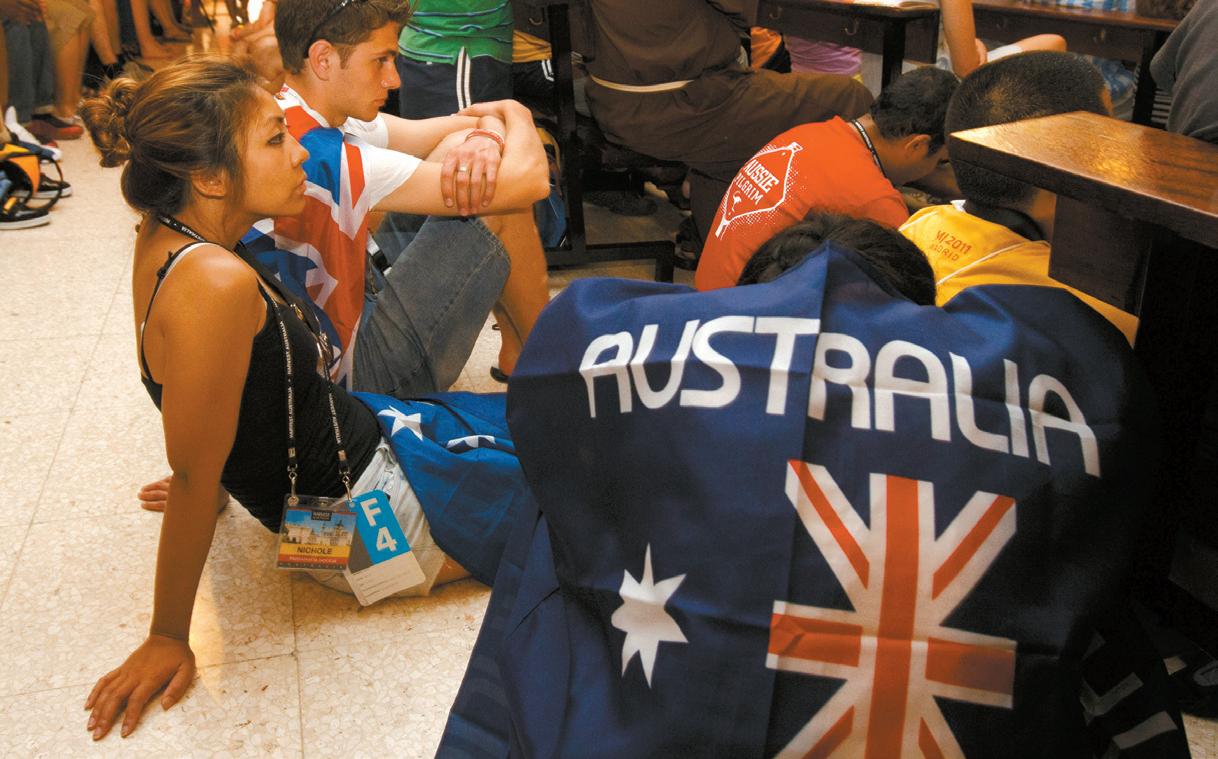
“WhY IS my neighbour sleeping?” and “how can I live a life pleasing to God when I am addicted to the internet?” were among questions put to Vancouver Archbishop Michael Miller at a catechesis for World Youth Day pilgrims.
Prelates from around the world who spent a morning answering questions in the parish of Nuestro Señora del Templo (Virgin of the temple) in San Fernando de henares on Madrid’s outskirts included the archbishops of Durban, Cardinal Wilfred Napier, and edmonton, Richard Smith. Australians Kevin and helen Wagner, directors of the emmanuel School of Mission in Rome, helped facilitate the catechesis.
Sessions were packed and attendees sat outside or on the floor to fit in.
on the second day, after one girl shared her personal testimony about the power of confession, many pilgrims were inspired to go to confession as well.
the sessions usually concluded by 1.30pm after which pilgrims were free to explore what Madrid offered and to attend events such as the Way of the Cross.
there were many opportunities to grow in the faith. the only challenge was getting to the venues, with the Metro de Madrid often packed to overflowing with cheery, chanting pilgrims.

FoR Pe Rth’S Mat de Souza, a two-week pilgrimage to holy places in egypt and Israel prior to Madrid was “much more spiritual” than the actual World Youth Day event .
“Going to the places where Jesus and the holy Family were and experiencing the passion [of the Cross] in the footsteps of Jesus left a strong impression on me,” said Mr de Souza, 24, who works as a designer for both Perth’s Catholic Youth Ministry and The Record
As a history student, he appreciated seeing the actual places biblical events took place: “It made the Bible and the faith much more real.” Doubts he might have had about his faith had now been dismissed and he felt a stronger connection to the Gospels. “By living them out and walking where the gospels happened, I can connect with the essence of it,” he said.
in a stuffy, all-controlling church, so they’re not rebelling against it. Instead, they’re rebelling against a rootless secular world, making them eager to embrace clear markers of identity and sources of meaning.”
Instead, Allen describes the fault line between liberals and evangelical Catholics as follows: “If liberals want to dialogue with post-modernity, Evangelicals want to convert it.” I would go further: evangelical Catholics want to convert it and not be subsumed and made irrelevant by it.
The windows of the Church have indeed been opened, and
young practising Catholics have decided they want something other than what first wafted through them in the confusing decades after the Council. The “Spirit of Vatican II” peace train has long since left the station and the last two generations of Catholics were not on it.
Whether we like it or not Allen says World Youth Day is evidence that this colossal change in attitude – to the church, and the world - is not only happening but to a large extent, has already occurred.
“The contest for the Catholic future,” Allen says, “is therefore
not between the Evangelicals and some other group – say liberal reformers ... It’s inside the Evangelical movement.”
For me, the real choice is between a dowdy, reactionary Catholicism that grasps at meanspirited certainty or alternatively, what Allen describes as “affirmative orthodoxy” – respectful of revelation and Catholic patrimony but “open and optimistic” about incarnating Christ in the world.
One of those camps is likely to fare a lot better in the secular media. And that’s exactly what they’ll need too, if they’re going to convert the world.
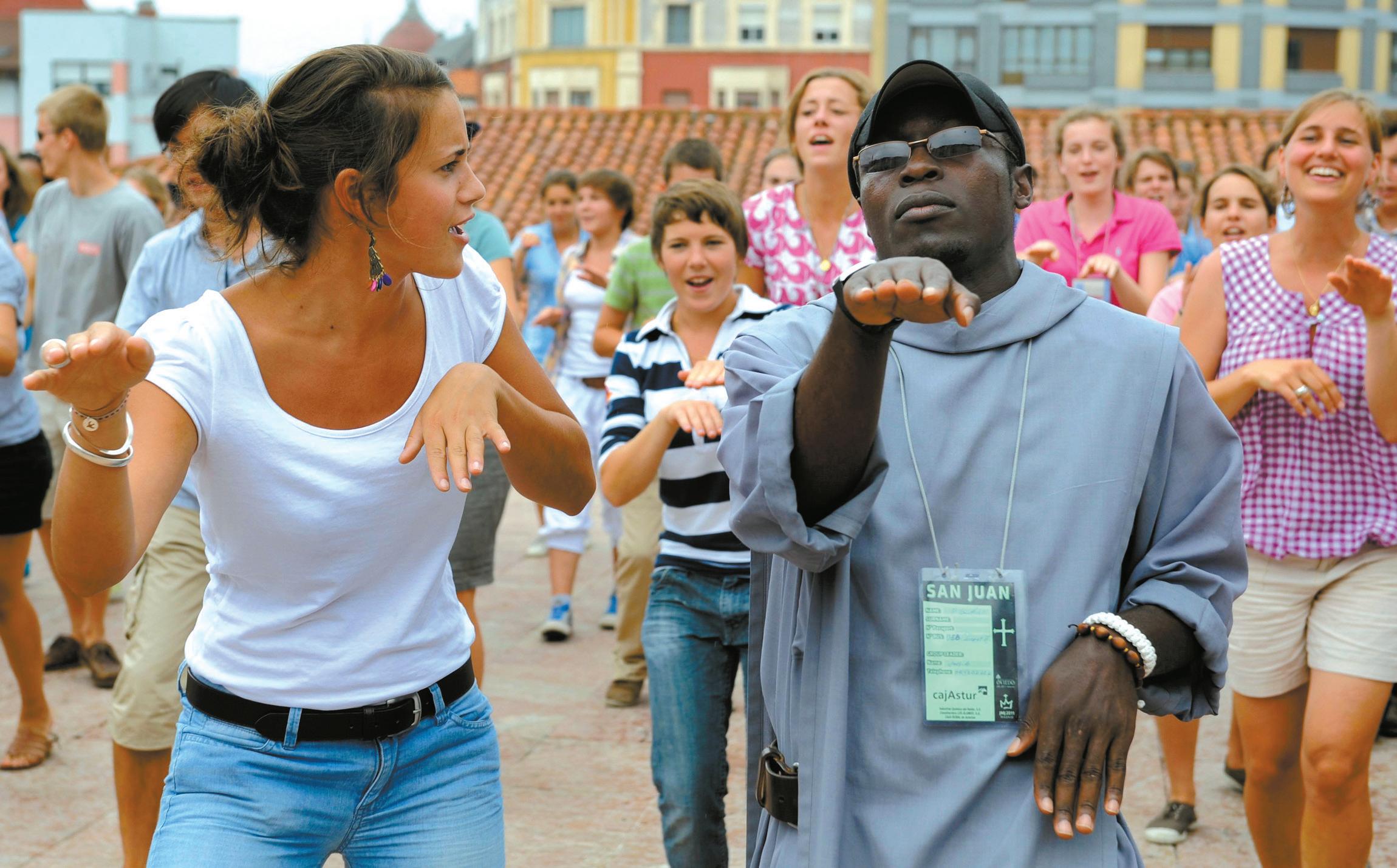
LunCh with the pope was an unforgettable experience for 12 young people at World Youth Day. Just don’t ask them what they ate.
“I wasn’t very hungry,” said Aurora Maria Almagro, 21, of Spain. “The food wasn’t the most important thing. We didn’t eat meat today because it’s Friday.”
In what has become a World Youth Day tradition, the pope sat down for lunch with a young man and woman representing the host country and a male and female each representing five continents.
Ten of the diners were chosen by lot from the international vol-
unteers who helped prepare World Youth Day. The representatives of new Zealand and Australia were chosen by their bishops.
The menu included a soup, a fish dish and ice cream. The diners sat at a round table along with Cardinal Antonio Rouco Varela of Madrid. Eva Janosikova of Slovakia and Ya-Chen Chuang of Taiwan sat either side of the pope.
“It was awesome. I wasn’t expecting that,” said Ms Janosikova, 28. “We prayed. he sat down and he opened the menu, but it was upside down, so I was just helping him. It was really
cute,” she said. “he surprised me by his listening very actively and being interested in others.”
Martin Leung-Wai, a 25-yearold from Auckland, said the luncheon had made his WYD “the experience of a lifetime.”
“having lunch with the holy Father is something you tell your ... family and friends and future generations about,” he said.
When asked why he hesitated to say it was something you tell your grandchildren about, he said he was considering a vocation to the priesthood or religious life.
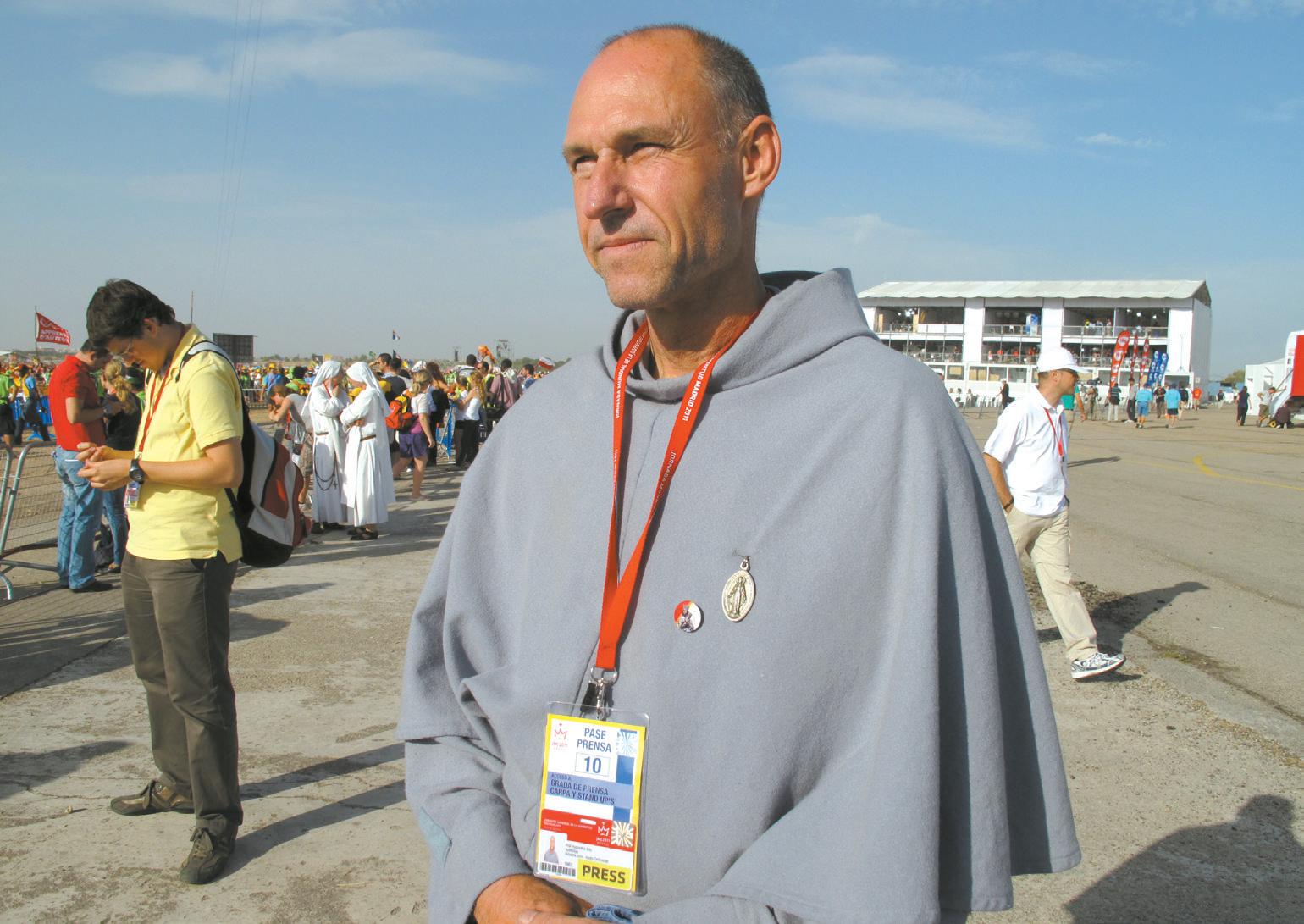
P OPE Benedict’s meetings with religious women and university professors, held at the Basilica of st Lawrence, had very different tones.
In speeches to both, he expressed gratitude and offered encouragement but, once a young professor himself, much of his advice to the scholars was based on personal experience and a continuing keen observation of what is happening in universities around the world.
Because of political or economic pressures and influence, too many universities are becoming almost technical schools, training the young for a profession without helping them learn to seek and to love knowledge and truth and what it means to be created in God’s image, Pope Benedict said.
Catholics teaching in universities are part of a centuries-long “chain of men and women committed to teaching the faith and making it credible to human reason”, he said. “We do this not simply by our teaching, but by the way we live our faith and embody it.”
“Young people need authentic teachers: Persons open to the fullness of truth in the various branches of knowledge, who listen to and experience in their own hearts that interdisciplinary dialogue; who, above all, are convinced of our human capacity to advance along the path of truth”, he said. It’s not enough to be an expert in your subject, the pope told the professors. “We need to realise in the first place
that the path to the fullness of truth calls for complete commitment: It is a path of understanding and love, of reason and faith.
“We cannot come to know something unless we are moved by love; or, for that matter, love something which does not strike us as reasonable”, he said.
Also, the pope said, scholars must have humility, “since it protects us from the pride that bars us from the truth. We must not draw students to ourselves, but set them on the path toward the truth which we seek together,” he said. Maria Sacristan, a professor in Madrid, said, “God must also be at the university, even in corporate strategy. I must teach my students business ethics, but also in a university we talk about everything: why exclude God?”
While the mood was more effervescent in the courtyard with the sisters and nuns, the pope’s message was no less challenging. Pope Benedict told the young religious, “In a world of relativism and mediocrity, we need that radicalism to which your consecration, as a way of belonging to God who is loved above all things, bears witness.”
Through their lives and vows, he said, religious become a “living exegesis” or explanation of God’s word of love and salvation.
“Your lives must testify to the personal encounter with Christ which has nourished your consecration, and to all the transforming power of that encounter,” he told them.

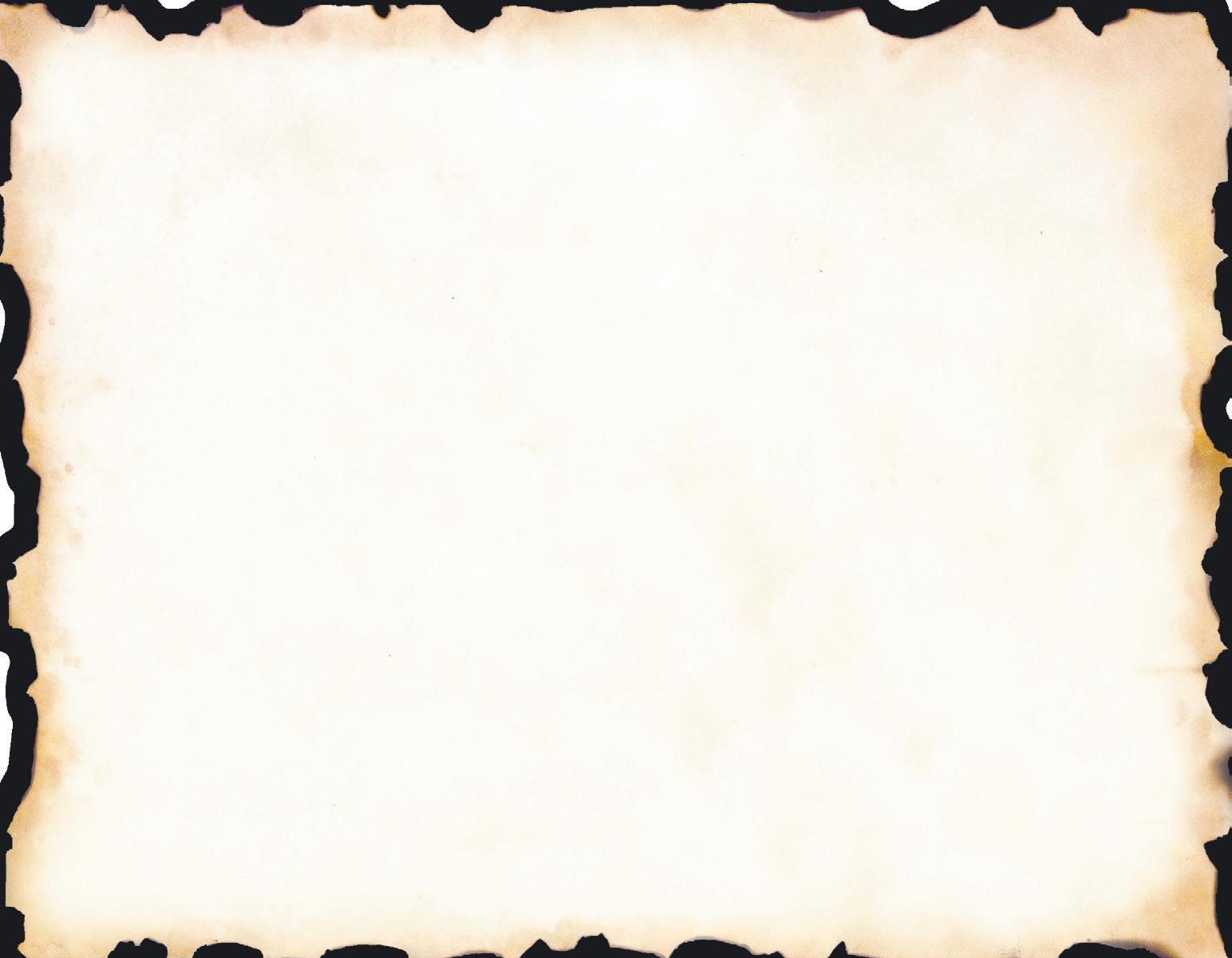

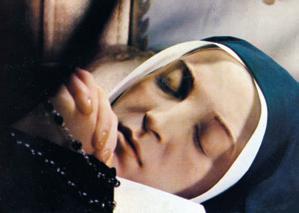


sky darkened the earth shook and the
They might not have realised it at the time, but more than a million young people gave a global witness to their faith in Madrid. Despite the heat, dust and discomfort, Bridget Spinks was on the spot.
WHAT a time to be young and Catholic. Madrid in 2011 for World Youth Day was definitely the place to be for thousands upon thousands of faithful from all parts of the world and all of one faith.
Coming from one of the most isolated cities in the world, Perth, the sheer number of people everywhere was overwhelming.
With hundreds of others at about four in the afternoon, I made my way to the Cuatro Vientos (‘Four Winds) airfield for the Papal vigil on 20 August.
The name proved to be auspicious given the weather which followed.
Assigned to cover Perth and Australian stories, I wasn’t expecting to write about the vigil but was so taken by the unplanned moments I couldn’t help but reflect on how it all seemed like a metaphor for the WYD theme: Planted and built up in Christ, firm in the Faith
A night of surprises and unscripted moments followed, the biggest being the weather which played a role in this historic, religious scene and which, in the end, provided the Pope with a natural teaching moment.
After arriving, I hit the airfield to find out how pilgrims were coping with the day.
Ominous clouds were already making their way towards the vigil gathering.
The sensation, the views, the heat - all reminded me of the Crucifixion when there would have been, I imagine, a great sense that something big was going to happen.
I kept thinking of the Catechism answer to what happened at 3pm when Christ breathed his last: the sky darkened, the earth shook and the dead arose and appeared to many.
By 6pm the sun was still as bright as ever, beating down on the thousands of young people waiting for the vigil and sleepout. Many had made their way by foot or bus for this climax to World Youth Day.
I discovered the next day that the venue couldn’t handle
the numbers who wanted to enter. The executive director for Madrid’s WYD, Iago de la Cierva, said that although there were never too many in attendance, some who were registered for the vigil with the Pope couldn’t get in.
Some pilgrims set up shelters to keep out of the heat; some sheltered under vehicles and others set up tents. Hundreds roamed up and down the dirt aisles between the sections for fun. They socialised and some sang their hearts out.
Others searched for friends but many were keen to find water and relief from the heat.
They thirsted.
Fire trucks passed through the airfield as best they could to hose people with water. A pilgrim near me wore a handkerchief covering his nose. It was dusty out there.
Voices over the loudspeakers advised the welcome news that 22,000 bottles of water and two water trucks were on the way.
Time pased and the sense of expectation hanging in the air became almost palpable.
The ceremony began after 8pm with the welcoming of the WYD Cross, itself a symbol of the event and known around the world.
Pope Benedict XVI opened the vigil with the sign of the cross, greeting pilgrims with “Pax Vobis” (“Peace be with you”).
As he did, the spirit of the one and a half million gathered faithful seemed united as one.
By 9pm, as the sun was disappearing, the pope recited the opening prayer and lightning flashed out in the twilight, rain starting to fall gently down.
The ceremony continued with personal questions to the pope from young people from the United States, the Philippines, Kenya, Germany and the UK about their vocation and the struggle to succeed in society while “fighting to be a witness of Christ in our world”. His answers were followed by a blessing.
The wind began to gust and it started to rain a bit harder as a deacon announced the Gospel.
Then the heavens opened.
“Whoever remains in me and I in him will bear much fruit, because without me you can do
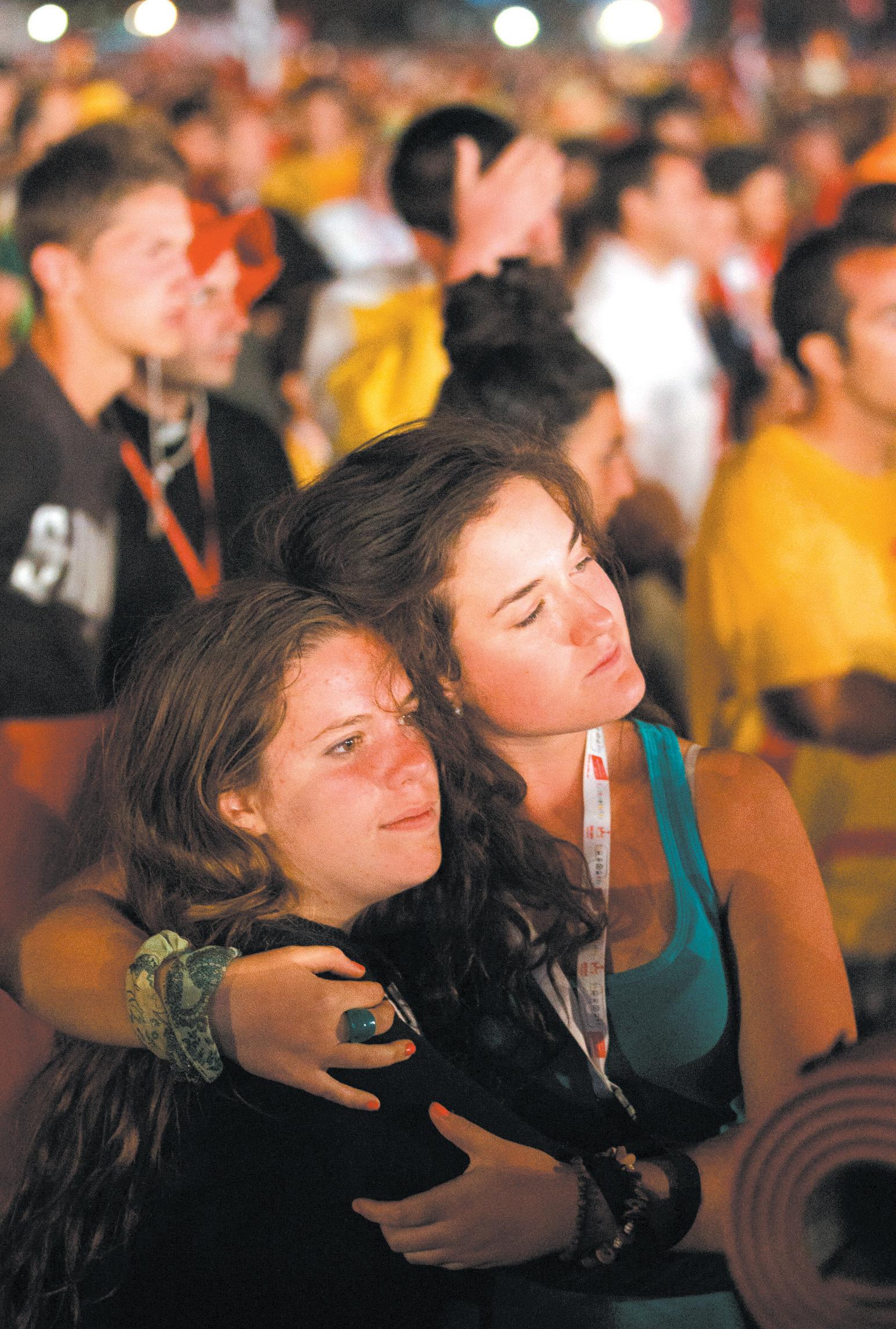

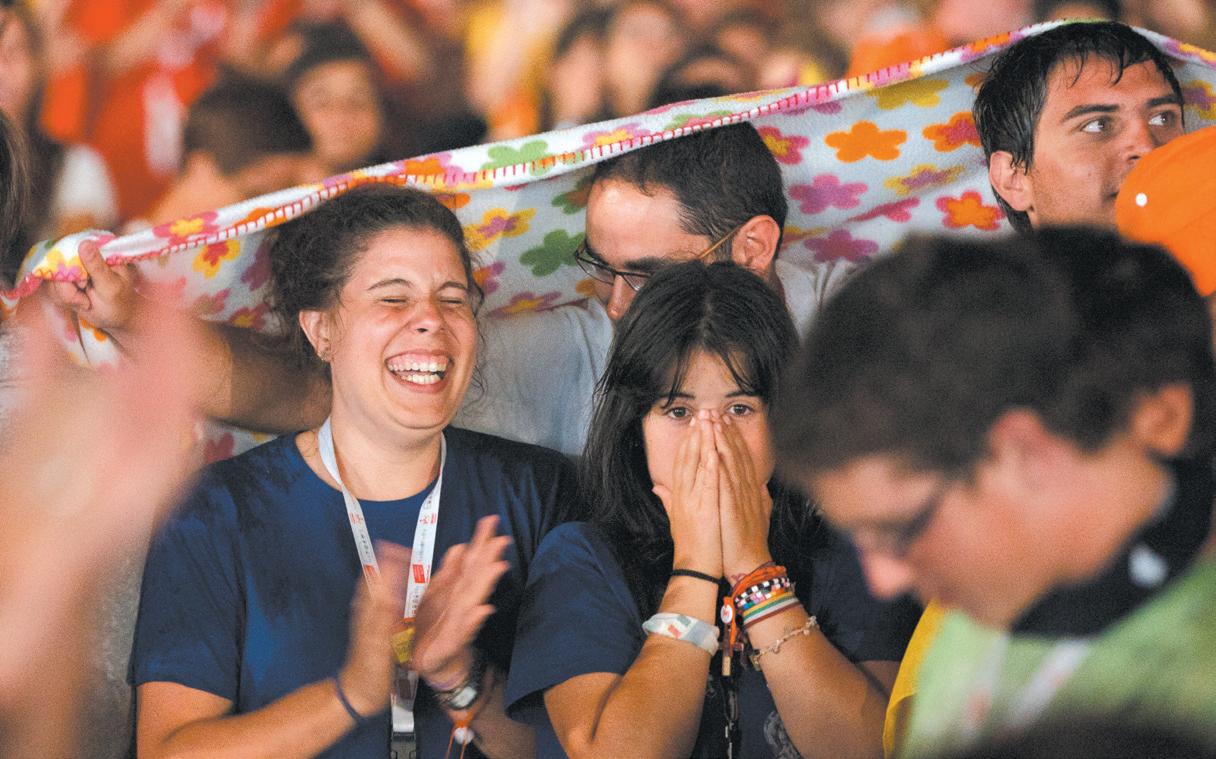
nothing” the deacon proclaimed from the Gospel.
But the blustery wind blew the papal zucchetto (skull cap) away, causing the youth to cheer their Shepherd. The deacon was forced to pause before continuing.
As the pope commenced his address, another cheer erupted from the crowd: “Esta es la juventud del papa” (“This is the young people of the pope”). Pope
Benedict could not get through his words without stopping.
When the wind and the rain began to sheet almost horizontally from the sky and as if into the pope´s face, he had to pause.
For those of us facing the stage, the wind and rain was hitting our backs.
Another chant broke out:
“Viva el papa oh eh, viva el papa heroe ” (“Lives the pope,
Middle: Lightning
Bottom: Pilgrims
lives the pope hero”). I moved to the media tent, and watching the events unfold on a soundless TV screen, could see white umbrellas appear to shield the Holy Father. Clergy around him, one by one, began to consult with him and each other.
But the rain-caused delay lifted pilgrims’ spirits – their faces and cheering radiated real joy which could not be quenched by the
Top: Young women embrace as rain falls during the vigil with Pope Benedict XVI at Cuatro Vientos airfield in Madrid. flashes behind pilgrims. express different emotions as the heavy rain falls.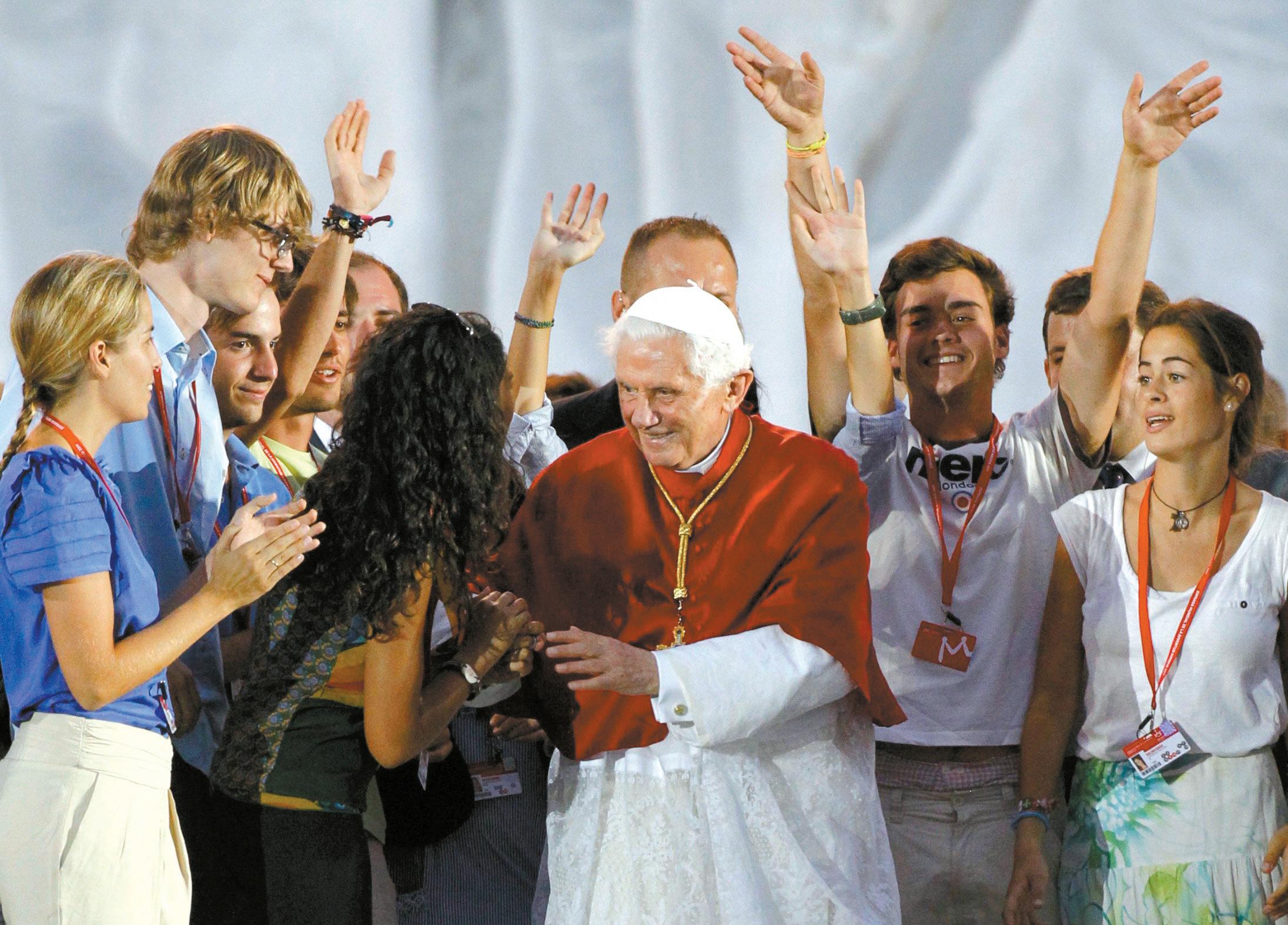
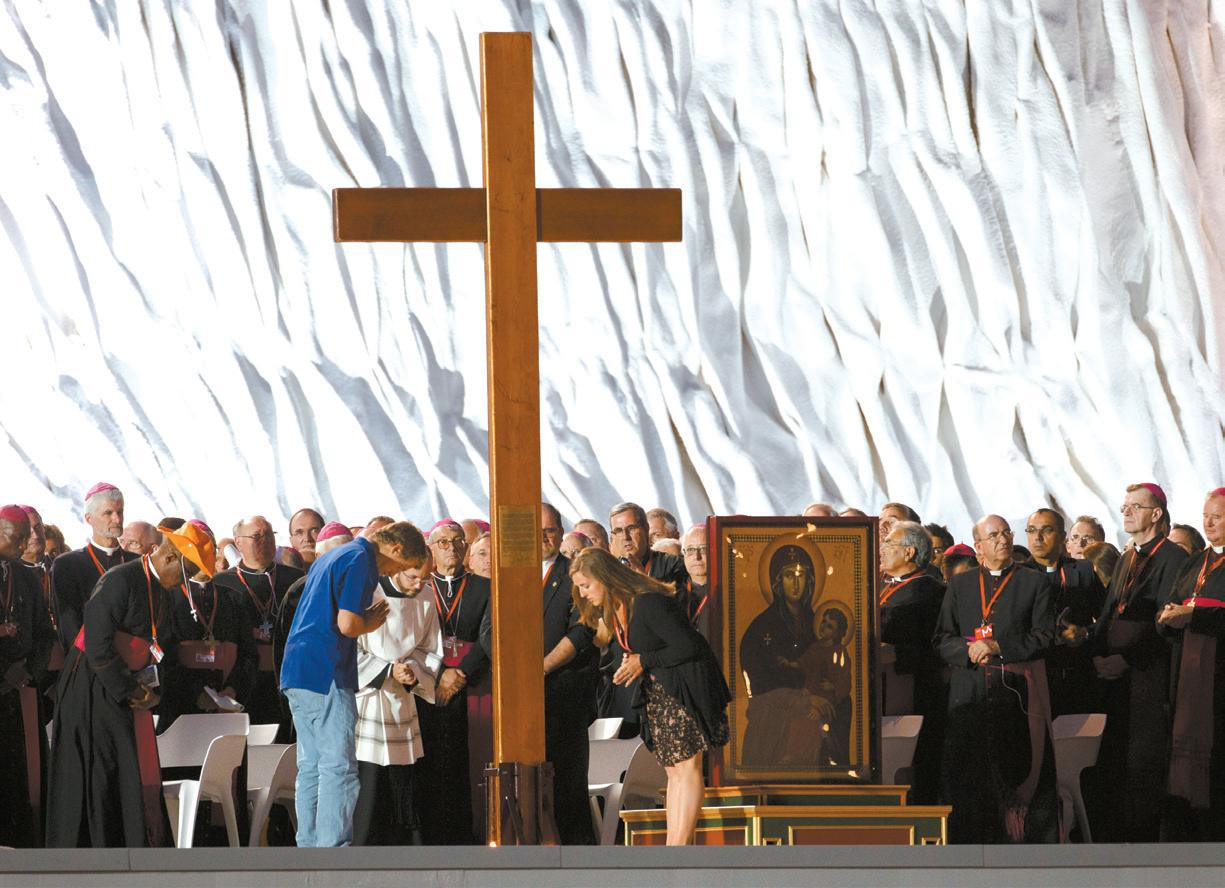

downpour. A towel arrived and the step at the Holy Father´s feet was dried. The pope spoke to someone on his right, another on his left. His notes were put back in his hands, and he spoke briefly to another cleric before beginning again.
But then his microphone wouldn’t work.
He tapped it himself but to no avail, the very human moment providing a little light comic relief.
It seemed for a moment as if the pope was surrounded in a mini-conclave to work out how to go forward. He checked the microphone again and this time it worked. Pilgrims cheered.
As the rain faded away, the air was still warm but the weight of the heat had disappeared.
The pope finished giving his address but did not read it in its entirety. He chose in the moment to focus mainly on the married vocation.
Then there was quiet - almost a hush – as preparations began for exposition of the Blessed Sacrament. Pilgrims were advised
that adoration would soon commence and we would, in silence, adore Our Lord, present in the Eucharist.
Incense started to billow heavenward and we knelt.
Fortunately, there was hardly any rain during Adoration, but the soothing rain that came at the end of a very hot, dusty and busy week in Madrid was something of a refreshing symbol.
Through the catechesis sessions at WYD and by simply living and
The greatest truth of our lives is that God loves us
How can a young person be true to the faith and yet continue to aspire to high ideals in today’s society? In the Gospel we have just heard, Jesus gives us an answer to this urgent question: “As the Father has loved me, so I have loved you; abide in my love” (Jn 15:9).
Yes, dear friends, God loves us. This is the great truth of our life; it is what makes everything else meaningful. We are not the product of blind chance or absurdity; instead, our life originates as part of a loving plan of God. To abide in his love, then, means living a life rooted in faith, since faith is more than the mere acceptance of certain abstract truths: it is an intimate relationship with Christ who enables us to open our hearts to this mystery of love and to live as men and women conscious of being loved by God.
and to follow with courage and generosity the path he maps out for us.
The Lord calls many people to marriage, in which a man and a woman, in becoming one flesh (cf Gen 2:24), find fulfilment in a profound life of communion. It is a prospect that is both bright and demanding. It is a project for true love which is daily renewed and deepened by sharing joys and sorrows, one marked by complete self-giving. For this reason, to acknowledge the beauty and goodness of marriage is to realise that only a setting of fidelity and indissolubility, along with openness to God’s gift of life, is adequate to the grandeur and dignity of marital love.
Lord in the Blessed Sacrament.
In an unscripted moment, just before the Vicar of Christ departed, he spoke personally to the youth of the world and used the weather to talk about this faith.
“Dear young people, we have come to the World Youth Day. Firm in the faith in Christ, you have resisted the rain,” he said. Before he left, he wished everyone a good night and a good sleep.
“We’ll see each other tomorrow, if God wishes it.”
sharing the faith with other pilgrims in an international context, it could be that there were a few life-changing, faith-deepening seeds sown.
But, as seeds need water to put their shoots into the ground and form a strong foundation, so do the seeds of faith.
The water for these seeds is God´s grace, flowing from prayer and the sacraments, from living a life of faith and by visiting Our
He thanked the pilgrims for the sacrifice they were making and suggested they offer it up to the Lord.
“Nos vemos manana, si Dios quiere,” he said, “We’ll see each other tomorrow, if God wishes it”.
He thanked everyone for their response to the unscripted turn of events.
“With Christ, you can always face the tests of life. Don’t forget that!” he said as he left.
If you abide in the love of Christ, rooted in the faith, you will encounter, even amid setbacks and suffering, the source of true happiness and joy. Faith does not run counter to your highest ideals; on the contrary, it elevates and perfects those ideals. Dear young people, do not be satisfied with anything less than Truth and Love, do not be content with anything less than Christ. Nowadays, although the dominant culture of relativism all around us has given up on the search for truth, even if it is the highest aspiration of the human spirit, we need to speak with courage and humility of the universal significance of Christ as the Saviour of humanity and the source of hope for our lives. He who took upon himself our afflictions, is well acquainted with the mystery of human suffering and manifests his loving presence in those who suffer. They, in their turn, united to the passion of Christ, share closely in his work of redemption. Furthermore, our disinterested attention towards the sick and the forgotten will always be a humble and warm testimony of God’s compassionate regard.
Dear friends, may no adversity paralyse you. Be afraid neither of the world, nor of the future, nor of your weakness. The Lord has allowed you to live in this moment of history so that, by your faith, his name will continue to resound throughout the world.
During this prayer vigil, I urge you to ask God to help you find your vocation in society and in the Church, and to persevere in that vocation with joy and fidelity. It is a good thing to open our hearts to Christ’s call
Christ calls others to follow him more closely in the priesthood or in consecrated life. It is hard to put into words the happiness you feel when you know that Jesus seeks you, trusts in you, and with his unmistakable voice also says to you: “Follow me!” (cf Mk 2:14).
Dear young people, if you wish to discover and to live faithfully the form of life to which the Lord is calling each of you, you must remain in his love as his friends. And how do
“Faith does not run counter to your highest ideals; on the contrary, it elevates and perfects those ideals.”
we preserve friendship except through frequent contact, conversation, being together in good times and bad? Saint Teresa of Jesus used to say that prayer is just such “friendly contact, often spending time alone with the one who we know loves us” (cf Autobiography, p8).
And so I now ask you to “abide” in the adoration of Christ, truly present in the Eucharist. I ask you to enter into conversation with him, to bring before him your questions and to listen to his voice. Dear friends, I pray for you with all my heart. And I ask you to pray for me. Tonight, let us ask the Lord to grant that, attracted by the beauty of his love, we may always live faithfully as his disciples. Amen.
This is a slightly edited version of Pope Benedict XVI’s homily. at the prayer vigil with young people on 20 August. The full version can be found on the Vatican’s website: http://www.vatican.va.
Above: The pope greets young people as he arrives for the vigil. Left: Youth bow after placing the World Youth Day cross on stage. Bottom: Pilgrims pray during Eucharistic adoration.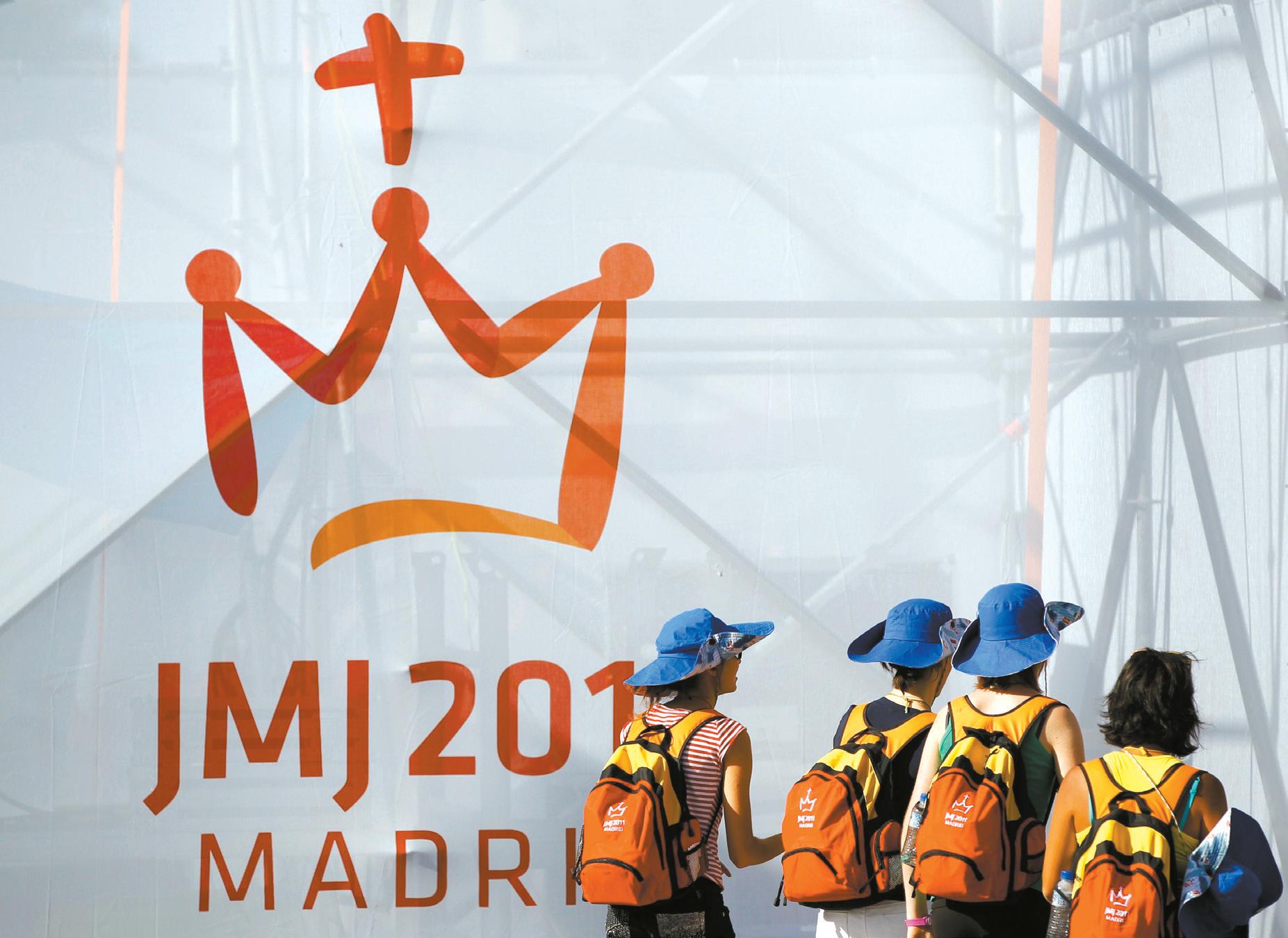
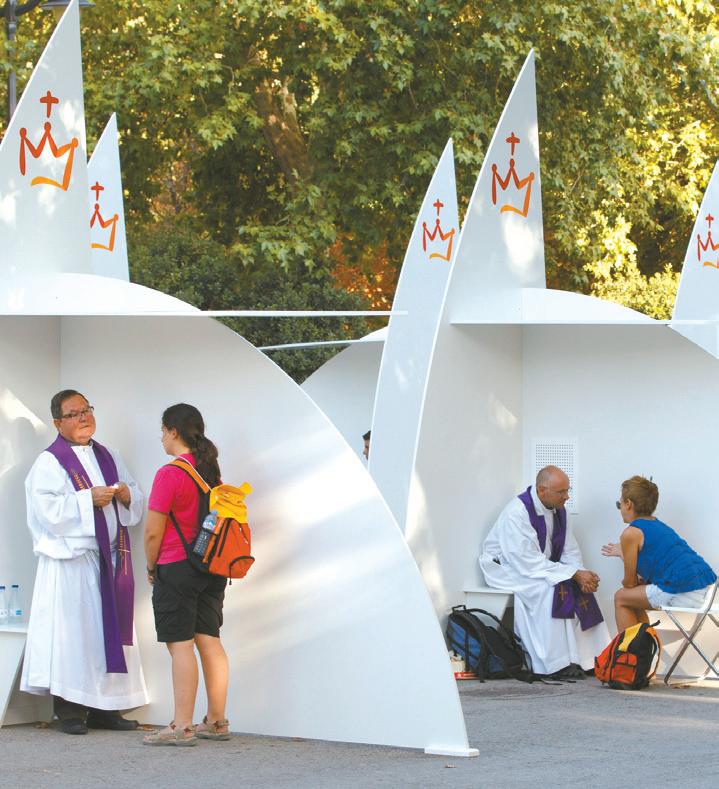

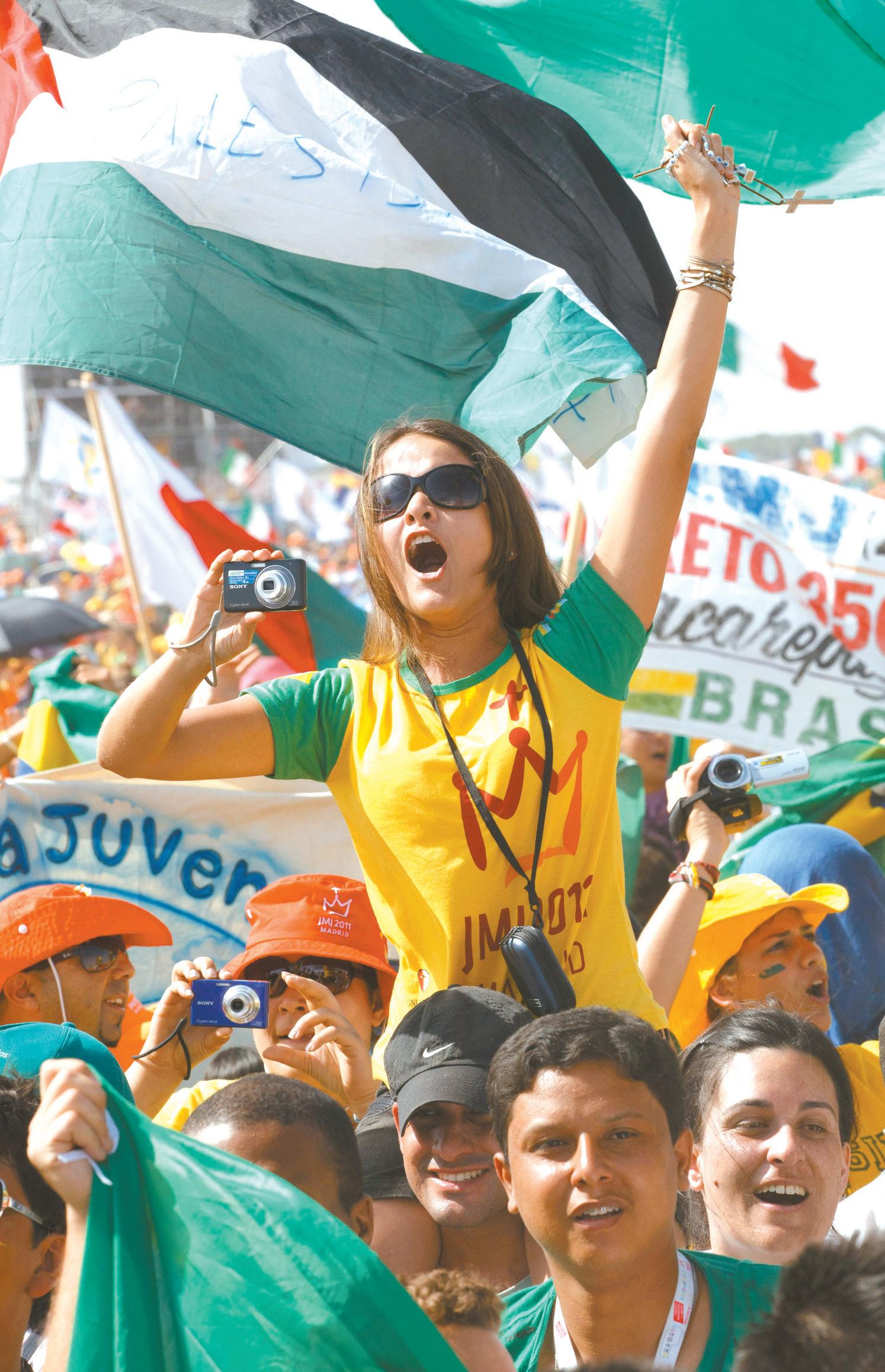
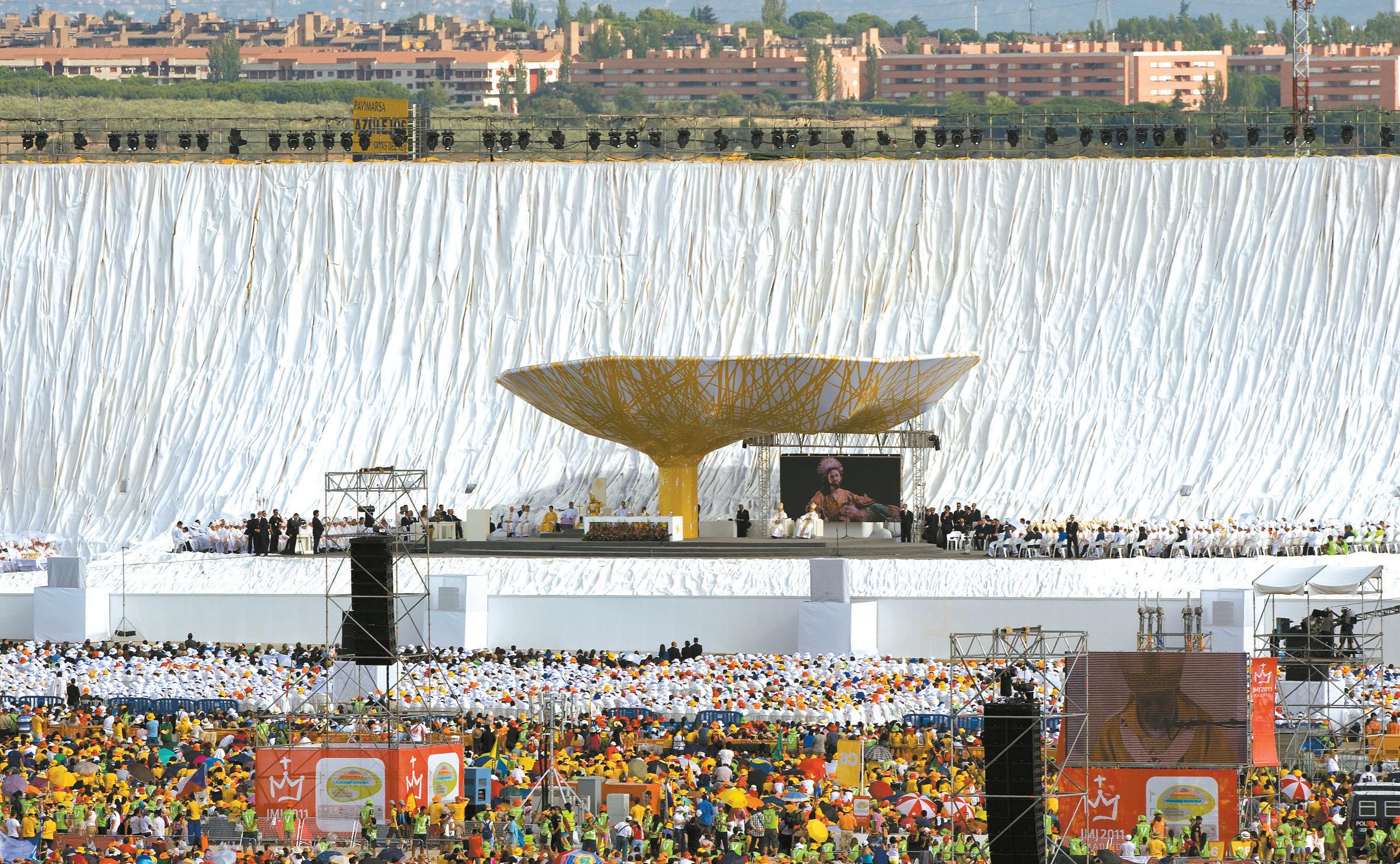
Benedict’s message to youth gathered for You’re
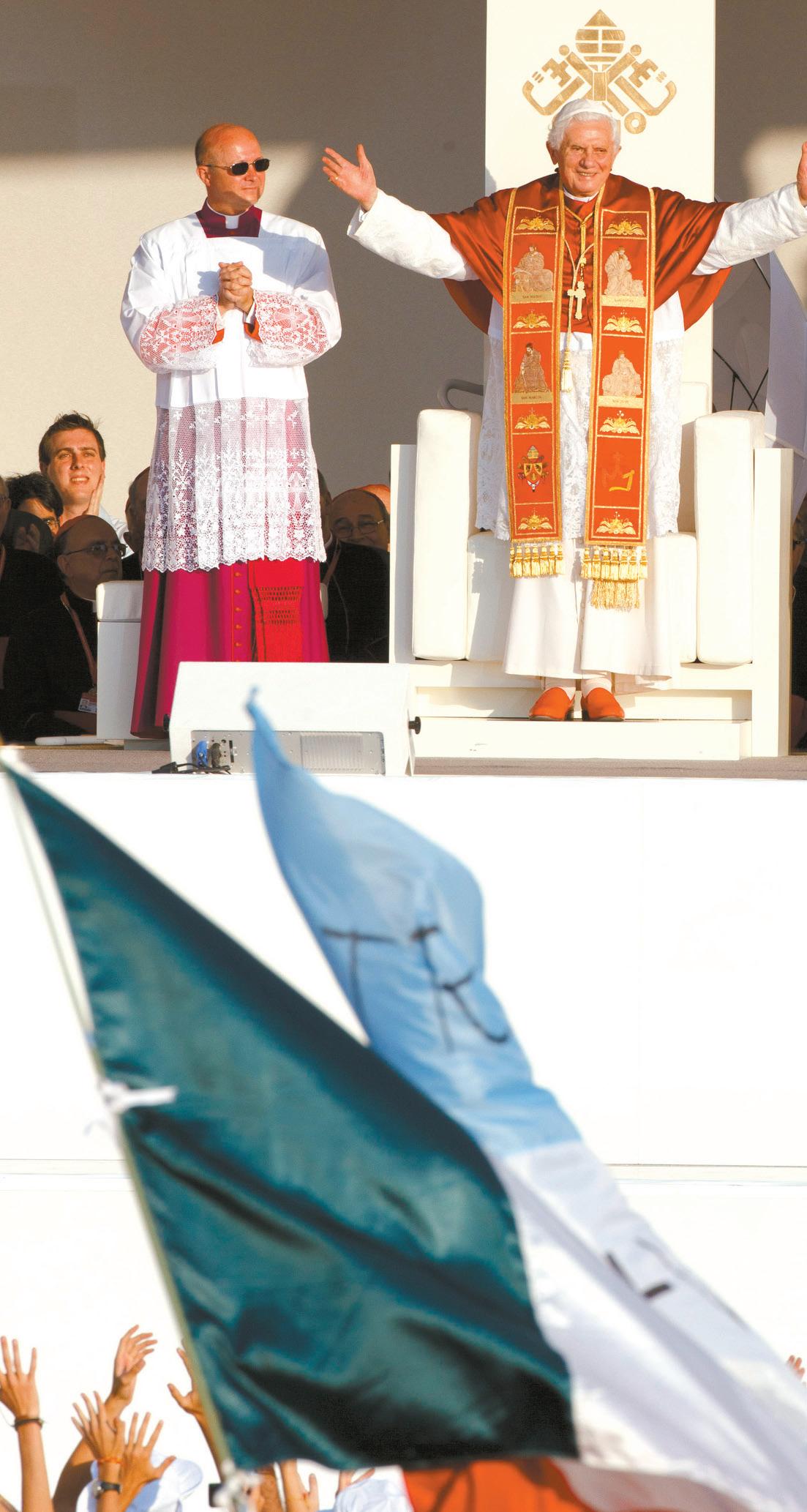 By Cindy Wooden
By Cindy Wooden
Listening to and praying with energetic young Catholics is a joy, Pope Benedict XVI told the King of Spain. “I have come here to meet thousands of young people from all over the world, Catholics committed to Christ, searching for the truth that will give real meaning to their existence,” the pope told King Juan Carlos on 18 August at Madrid’s Barajas airport.
The King and Queen Sofia welcomed the pope, as did 50 Spanish boys and young men dressed as Swiss Guards. Pope Benedict told the royal family, Spanish bishops and dignitaries at the airport, that joining hundreds of thousands of young people at World Youth Day was the motive for his third papal trip to Spain since becoming pope in 2005.
Many participants at the youth gathering “have heard the voice of God, perhaps only as a little whisper, which has led them to search for him more diligently and to share with others the experience of the force which
he has in their lives”, the pope said. Faith gives young people the strength to look with hope and confidence at the world and its problems, he said. They see “superficiality, consumerism and hedonism, the widespread banalisation of sexuality, the lack of solidarity, the corruption,” he said.
”Let nothing and no one take away your peace; do not be ashamed of the Lord.” - POPE BENEDICT
XVI
But with God by their sides, they walk upright, the pope said.
World Youth Day, he said, reminds them that they are not alone in their journey with God and gives them an opportunity to share their hopes, their cultures and “motivate each other along a journey of faith and life”.
“It gives me great joy to listen to them, pray with them and celebrate the Eucharist with them. World Youth Day brings us a message of hope like

a pure and youthful breeze,” he said.
Young Catholics could feel alone or ignored, he said, “but they are not alone. Many people of the same age have the same aspirations and, entrusting themselves completely to Christ, they know they have a future before them and are not afraid.”
Some struggle in places where there is conflict or a lack of justice and respect; others are tempted by drugs or alcohol, while some fear the future because of economic difficulties or environmental destruction, he said.
“There are even some who, because of their faith in Christ, suffer discrimination, which leads to contempt and persecution, open or hidden, which they endure in various regions and countries. Some are harassed” to give up faith in Jesus and are not allowed even to mention his name, the pope said.
“But with all my heart, I say again to you young people: Let nothing and no one take away your peace; do not be ashamed of the Lord,” he said.
cns contributing to this story was Gretchen crowe in Madrid
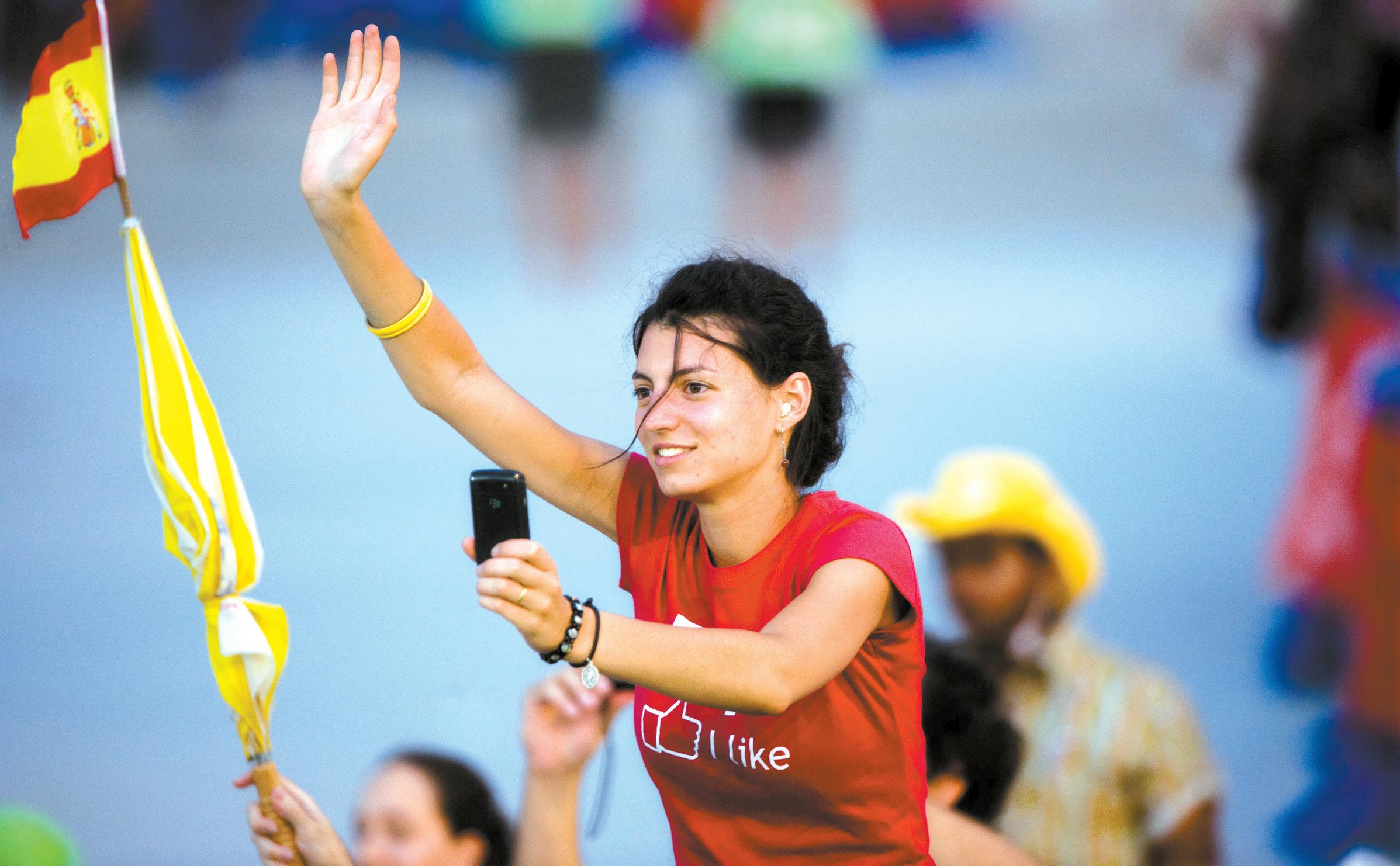

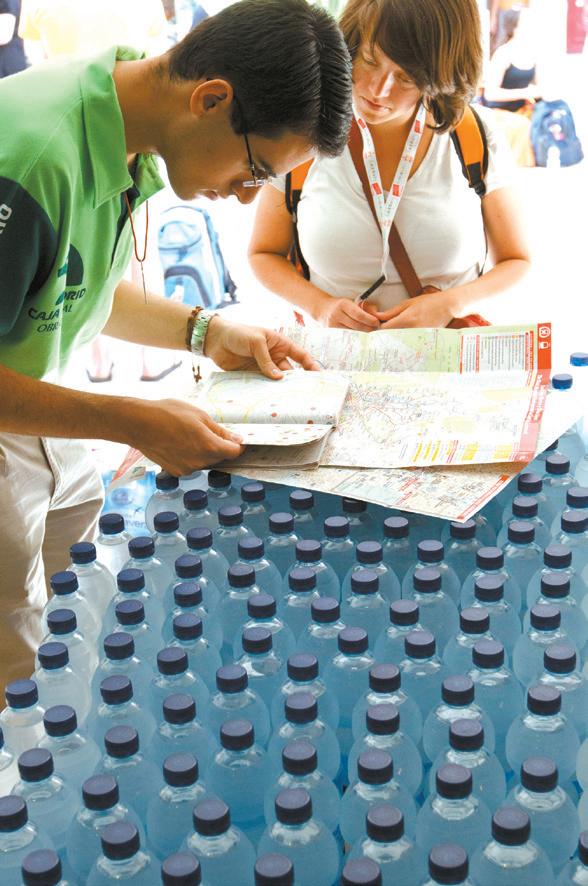

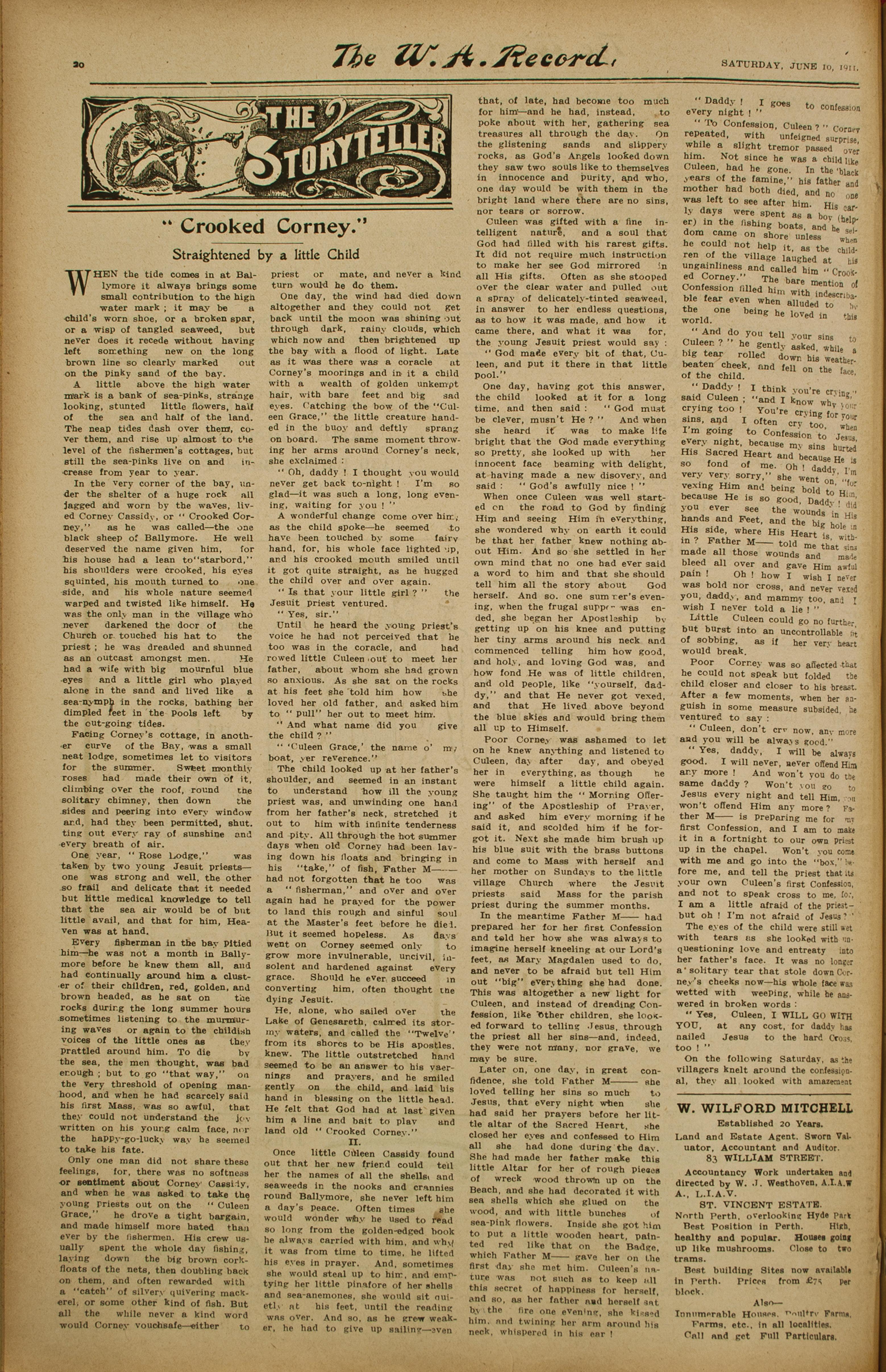
WASHINGTON - Few would argue against the notion that to solve conflict created by religious intolerance, prejudice and discrimination, it is essential to understand how religion motivates believers and shapes their world views; respecting all religions is not enough.
While religion can be a cause of conflict, it carries political leverage which makes it a source for solutions and a tool for peace building.
“We are giving a whole government effort to put religion on the table”, said Rev Suzan Johnson Cook, new US ambassador-at-large for international religious freedom.
The US is “on the front lines of confronting conflict and urging and pressing governments” to
BANGALORE - The brother of assassinated Catholic government minister Shahbaz Bhatti joined Christians in rejecting the idea family and property disputes were behind the March assassination.
“This is just nonsense,” Paul Bhatti, special adviser on minorities to the Pakistan government, said to Catholic News Service (CNS).
The assassination of 42 year old Bhatti, ambushed and sprayed with bullets while being driven to his office, drew worldwide condemnation, including from the pope.
Paul Bhatti spoke to CNS about a leaked news report absolving Islamic extremists. Quoting an investigator associated with the Joint Investigation Team probing Bhatti’s murder, The Express Tribune reported, “Shahbaz’s murder is said to be linked to a ‘chronic rivalry’ with relatives who lived in Faisalabad five years ago”.
“The mindset behind such propaganda is very disturbing,” said Paul Bhatti. He discussed the report with the head of the Joint Investigation Team who told him it was nonsense.
Shahbaz Bhatti became a target of Islamic extremists after he expressed support for Asia Bibi, a Christian mother of five sentenced to death for blasphemy. cns
fight for religious freedom, she said. Her comments came in response to remarks in a recent panel discussion on the role of faith-based diplomacy and the use of religion to resolve conflict, especially with regard to Pakistan.
The press club discussion focused on a new book by Douglas Johnston, president and founder of the International Centre for Religion and Diplomacy, who said the US should realign its view on the role religion plays in politics.
Johnston said his book, Religion, Terror and Error, is a “how-to” book for foreign policy as it relates to religion. In it, he addressed what he said are political ambiguities surrounding religion and the state; described the need for additional training of military chaplains; offered suggestions for reorganis-
ing the executive branch of the US government to “facilitate the consideration of religious factors in the normal course of doing business”; developed “a realistic model for conflict prevention”; and highlighted the important work of nongovernmental organisations. His book introduced an idea of “organic suasion,” a method of change from within. He focused on a teacher-training workshop at the centre to reform madrasas, Pakistani religious schools, by transforming the pedagogy.
Over the past seven years, he said, the workshops have had success in more than 1,600 madrasas. The project works to expand the curriculum to include issues of human rights and religious tolerance, but suggested changes are grounded in Islam. The programme also appeals
to Islamic heritage, respects the importance of “indigenous ownership of the process of change” and is taught “with humility”.
By changing the education of young Pakistani boys, the International Centre for Religion and Diplomacy hopes to change the future of Pakistan by combatting the nation’s historically violent past, according to Johnston.
Speaking of government methods of solving religious-based conflict, Johnston said, “most of what we’ve done today is address the symptoms but we need to address the cause”.
Johnston said there is nothing more strategic “on or off the battlefield than our work with madrasas”.
Also at the panel discussion were James Glassman, former undersecretary of state for public diplomcy
and public affairs, and Edwin Meese, former US attorney general.
Glassman said, “We need to take the tools of public diplomacy as seriously as we take the tools of violence” and “engage the persuasive impact of religion”.
He described Johnston’s approach as “a new avenue to diplomacy,” one that addresses “the ideas behind the guns.”
Meese said he believes religion is often excluded as a solution to political issues because there is a misunderstanding of what “separation of Church and state” means.
Meese cited the US First Amendment which states government cannot endorse one religion over another or establish a national church, but “there is no mention that government should exclude religion in their activities.” cns

WASHINGTON - Close to one-
third of the world’s citizens faced increased restrictions on religious practice and expression imposed by respective nations’ governments, according to a study by the Pew Research Centre’s Forum on Public Life.
The report, Rising Restrictions on Religion, noted such limitations were on the upswing in 23 of the world’s 198 nations, and many of those countries were among the world’s most populous and fastestgrowing in population, affecting a higher percentage of the world’s residents.
By contrast, 12 nations were judged to have eased restrictions on religion.
But the report said that those countries “already scored low” previously, while nations imposing greater restrictions “already had high or very high levels of restrictions or hostilities.” No changes were reported in 163 countries.
During a three-year period,
between mid-2006 and mid-2009, the study examined a total of 33 measures phrased as questions about government restrictions such as laws, policies and actions, and social hostilities such as acts of religious hostility by private individuals, organisations and social groups.
The study used 18 widely cited, publicly available sources of infor-
mation, including reports by the United Nations, the US State Department, Human Rights Watch and Amnesty International.
Pew said the sources “were combed for factual information on specific policies and actions,” not for commentary or opinions.
“Only about one per cent of the world’s population lives in coun-
tries where government restrictions or social hostilities declined,” the report said.
Of the world’s 25 most populous countries, the US was one of 17 in which neither governmentimposed religious restrictions or social hostilities rose substantially. In none of those 17 did restrictions or hostilities measurably decrease.
“Social hostilities involving religion in the US remained at a moderate level,” the report said. “In recent years, the US annually has had at least 1,300 hate crimes involving religious bias, according to FBI reports.”
The most populous nations where restrictions increased in the three-year study period were Egypt, France, Algeria, Uganda, Malaysia, Yemen, Syria, Somalia, Serbia, Tajikistan, Hong Kong and Libya.
Egypt, Algeria, Yemen, Syria and Libya have been part of the rolling wave of “Arab Spring” protests aimed at reforming and, in some cases, removing long-entrenched
governments. Greece, with half of Syria’s population, was the largest nation where religious restrictions decreased, followed by Togo, Nicaragua, Macedonia, Guinea Bissau and East Timor.
The other countries with declines had fewer than one million citizens.
The most populous nations where social hostilities rose were China, Nigeria, Russia, Vietnam, Thailand and the United Kingdom, followed by three European nations with fewer than 10 million citizens: Sweden, Bulgaria and Denmark.
Nations with declines in social hostilities were, by population size, Tanzania, Chad, Kyrgyzstan, Lebanon and Liberia.
Christians faced harassment in more nations than any other religious adherents: 130 nations, followed by 117 nations for harassment of Muslims, 75 for Jews, 27 for Hindus and 16 for Buddhists. Christians and Muslims account for about half of the world’s population. cns
VATICAN CITY - The Vatican has published online more than 70 pages of documents which, it says prove it had no knowledge of a priest’s sexual misconduct until he and his religious order petitioned for his laicisation.
The case involves the late Andrew Ronan, a former Servite priest who was laicised in 1966. A man who says he was abused by Ronan in the US state of Oregon in 1965 has taken the Vatican to court, claiming Ronan was a Vatican employee.
In a statement, Vatican spokesman Fr Federico Lombardi said: “While most of the case has been dismissed, two accusations made by [the] plaintiff’s attorneys have persisted and have been repeatedly reported in the press: that the Holy See knew that Ronan was an abuser, and that the Holy See transferred Ronan from one place to another with that knowledge.
“Those would, of course, be very serious accusations – if true,” Fr Lombardi said. “But, as we are learning with the development of the case, the accusations are decidedly not true.”
The Vatican spokesman said that “to assist those in the public who wish to study the matter carefully, and to assist the United States court in resolving the remaining issues in the case”, the Holy See was releasing documents relating to Ronan’s dismissal from the clerical state.
The documents include a formal request made by the Servite order in 1953 asking the Vatican to set aside the age requirement so that Ronan, then only 27 years old, could be appointed master of novices at the Servite convent in Benburb, Ireland.
The letter described Ronan as “a youth with optimal qualities” and the then-Vatican Congregation for Religious granted the permission.
But the documents also say Ronan was removed from the position “because of homosexual-
SANTIAGO, - As protests by university and high school students continue across Chile, the nations’ bishops have called for dialogue and legislation to ensure equitable access to education.
“Without high-quality, equitable education, no human and social development can be sustained solidly over time,” the bishops said in a statement issued on 10 August.
The statement said current political and economic models had been “based more on greed and unlimited profit than on the integral development of the majority”.
Noting that education was “one of the greatest public services provided to society”, it said parents had the right to choose the type of education they wanted for their children.
The statement added, however, that “no young person can be deprived of studying because of his or her socio-economic condition,” and stressed the importance of “quality education and good management of public resources.” CNS
ity with the students”, according to a letter from the US provincial who transferred Ronan to St Philip’s High School in Chicago.
The provincial wrote to the order’s superior general in 1963 after the superior asked Ronan if he wanted to serve as master of the order’s international seminary in Rome.
Written on the letterhead of the provincial superior of the Chicagobased Our Lady of Sorrows Province, the letter said: “I am very sorry to have to tell you that he must not be elected master.”
The provincial, whose signature is illegible, said Ronan asked him not to tell, but “I feel and know I must do so”.
He said: “I removed him from Benburb because of homosexuality with the students, which he freely admitted and confessed when the fact had been brought to the prior by one of the students.”
“We lost vocations as a result of this in Ireland, and we are most fortunate that more scandal did not come,” the provincial said, adding that putting Ronan back in a seminary would be “contrary to all prescripts of the church and to common sense”.
The 1963 letter was part of documentation the Servites submitted to the Vatican in 1966 to support the request to laicise Ronan quickly.
“Clearly the Vatican did not have this letter at the time” of the initial reports about Ronan’s abusive activity, Fr Lombardi told CNS.
The published documents also include Ronan’s request for laicisation “based on my repeated, admitted, documented homosexual tendencies and acts against the vow of chasity (sic) and celebacy (sic) of the priesthood”.
In June 2010, the US Supreme Court left standing a lower court ruling that Ronan’s victim could try to hold the Vatican financially responsible for his sexual abuse by Ronan if he could persuade the court that the priest was an employee of the Holy See. CNS

Note to preachers: focus on one thing, and it’s not all about you
FOR eIGHT days at Loyola University New Orleans, three priests and five deacons absorbed the cool mathematics and internal symmetry of good preaching.
Just as Moses descended from Mount Sinai with 10 Commandments chiselled on two stone tablets, the rules laid out by Fr Roy Shelly and Deborah Wilhelm, while not etched in permanent marker, are boundaries worthy of respect: six to eight minutes for a Sunday homily, three to five minutes for a weekday sermon.
“The idea is not so much ‘brevity’ as it is not taking longer than you need,” said Ms Wilhelm, a doctoral student with a focus on preaching at the Aquinas Institute of Theology.
Improving the quality and spiritual depth of preaching has been a passion for Fr Shelly, who is director of vocations and oversees homiletics training for the perma-

nent diaconate in his diocese of Monterey, California. If priests and deacons did not take seriously their vocational call and the preparation needed to preach the gospel, Fr Shelly said, the resulting communication would be flat and possibly even an obstacle to worship. “The Pew Foundation looked at why young adults are leaving the church, and the first reason the study gave was poor preaching,” Fr Shelly said. “In the diocese of Monterey, we only recently renewed the diaconate. The mandate that came from the presbyteral council was that deacons should be effective preachers – and we should also hold the presbyterate to the same standards. This post-Vatican II generation expects more from us.”
Spiritual preparation was critical, Fr Shelly said, and the methodology involved “lectio divina”
– reading, reflecting and praying over the Scripture passage.
“Archbishop Fulton Sheen said, ‘If you want me to speak for an hour, I’m ready. If you want me to speak for 10 minutes, I’ll need a week,’” Fr Shelly said. “We encourage people to focus in on one idea and also to realise that this is not the only time in the lives of these people that they will hear this text preached on. The worst thing is to try to say everything. Focus on one thing.”
In training preachers, Father Shelly asks them to write down one sentence that encapsulates the homily they are about to give. Then members of the congregation are asked to write down in one sentence the theme of the homily they have just heard.
“Great preaching was a balancing act, Father Shelly said. While the homily should be “personal, it should not be about you.” CNS
MANILA - The Catholic Church in the Philippines says the chance of further talks with the government over birth control are almost zero after President Benigno Aquino made a controversial reproductive health bill a priority measure.
“I think the chances (of dialogue) are very slim because (Aquino) himself slammed the door shut with this (decision),” the executive secretary of the Philippine bishops’ Commission on Family and Life, Fr Melvin Castro, told the Asian church news agency UCA News.
President Aquino said on 16 August he wanted “expeditious action” on the priority measures he submitted to Congress, including the reproductive health bill.
The bill would require the government to provide information on family planning options, provide contraceptives free of charge and introduce reproductive health and sexuality classes in schools.
Catholic leaders are opposed to the bill. Prior to its introduction,
Catholic officials met with Mr Aquino and his aides, but cut off meetings in May when he refused to budge on the bill’s provisions.
“This is very painful because he said in his (state of the nation address) that he wants dialogue with us and even lauded some Catholic Church leaders,” Fr Castro said. “It seems he didn’t really want dialogue, and this proves it.
Archbishop Jose Palma of Cebu, the president-elect of the Philippine bishops’ conference, expressed dismay at the president’s decision.
“I am saddened that the [reproductive health] bill is one of the priorities submitted in Congress,” the prelate said as he called on the faithful to strongly oppose the measure’s passage.
“I personally would like to exhort the many people who believe in the cause of the Lord, the values that the gospel preaches and the stand that we have been defending these months to rally to this cause,” Archbishop Palma said. CNS
Women with their newborn babies inside the maternity ward of a governmentrun hospital in in Manila. Photo: CNS/Cheryl r avelo, r euter S a young woman prays at the monument of our lady of lebanon in harissa, lebanon, to mark the feast of the assumption of Mary on 15 august. Photo: CNS/Cy N thia Kara M , r euter SDUBLIN - The Dublin Archdiocese is on the brink of financial collapse because of payouts to victims of clergy sexual abuse, according to an internal report.
The report – prepared by the diocesan Council of Priests and obtained by The Irish Catholic newspaper – said that “reserves the diocese had built up over decades have been spent on seeking to compensate, somewhat, victims of child sexual abuse by priests”.
So far, 172 civil actions from people alleging abuse have been taken against 44 priests of the Dublin
Archdiocese; 117 have been concluded and 55 are ongoing.
The costs, so far, to the archdiocese for settlement of claims regarding child sexual abuse by priests is currently at 13.5 million euros ($A18.6 million) – 9.3 million euros in settlements and 4.2 million euros in legal costs for both sides.
“This means the diocese will have to go into debt for a considerable period and will not have resources for other projects unless we fundraise for them specifically,” the report says.
“This is entirely appropriate. It goes without saying that the diocese must do what it can to support
these people in a sensitive way,” the report notes. “We are in a precarious position in many parishes and in the diocese, close even to a state of financial collapse.”
In addition to this substantial outlay, the diocese has invested considerable resources in training some 2,500 volunteers in parishes to ensure that child-safeguarding standards are reached and in setting up a child protection office.
The archdiocese will consult with priests regarding finances across the diocese in September, with a view to planning up to 2020.
The document proposed a parish levy based on the number of
Catholic families in the parish; diocesan officials believe it could raise up to 3 million euros per year. Officials also hope to secure 20 million euros from parishes with “surplus funds” to plug a deficit in the general fund.
The report notes: “Collections in the diocese have been decreasing in recent years. In a time of economic downturn, as well as declining participation at Sunday Mass, this is not surprising. On the other hand, even the most committed often do not understand what the various church collections are for.”
In a hint that central administration of the diocese may be slashed,
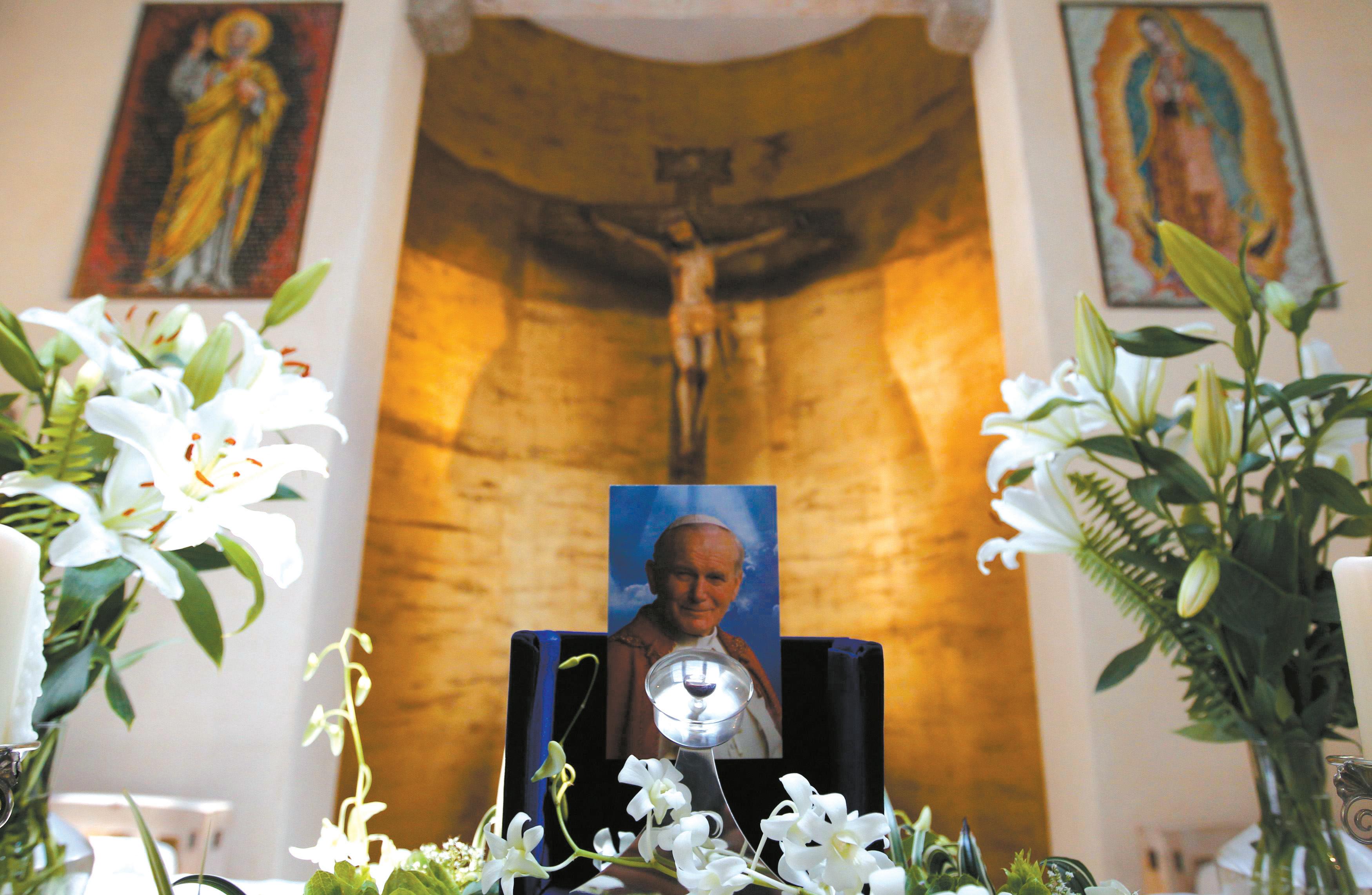
MEXICO CITY - Blood belonging to Blessed John Paul II will be exhibited throughout Mexico as part of a pilgrimage of peace.
The pilgrimage was scheduled to begin on 25 August, with the blood being taken from the Vatican embassy to the Basilica of Our Lady of Guadalupe. It will be taken to more than 90 sites nationwide, many in dioceses with
high rates of violence stemming from organised crime and drug cartel activities. The violence has claimed more than 40,000 lives in Mexico since December 2006.
The capsule of blood, drawn shortly before John Paul’s death in 2005, is being sent to Mexico at the request of the country’s bishops’ conference, which expressed hopes that the veneration of the
relic would promote peace.
“With perceptions of a Mexico that has sunk into pain, hopelessness, anguish, revenge and rancor, which are a consequence of insecurity ... the veneration of the relics will be an opportunity for the baptized and people of good faith to return to the eyes of God and, through the intercession of John Paul II, receive his peace and
mercy,” the bishops said in a statement. “Blessed John Paul II was, for the majority of Mexico, a man of peace, a missionary of hope whose life was a testimony to the values of the gospel.”
Blessed John Paul visited Mexico five times during his papacy, paving the way for formal relations between Mexico and the Vatican in 1992. CNS
the document warns any proposed changes “must include an assessment of all central administration posts” and that pay cuts must be considered at diocesan agencies and for parish pastoral workers.
Recently filed accounts reveal the cost of the archdiocesan central administration has increased 500 per cent in less than 10 years, while the money spent on diocesan and national pastoral services and commissions has fallen sharply.
The document proposes a publicity campaign to raise awareness among parishioners about the depth of the financial crisis in the hope of raising more revenue. CNS
LA PAZ - Bolivia’s bishops have expressed their support for indigenous people marching from the country’s northern Amazonian lowlands to the mountain city of La Paz to protest a planned highway through their territory.
About 800 demonstrators set out on foot to express their opposition to the road from the northern Beni department to the central Cochabamba region; it will cut through the Isiboro Secure National Park and Indigenous Territory.
The bishops have urged the government to meet the protesters.
“We call on the parties involved for a sincere and constructive dialogue ... to spell out the government’s responsibility in promoting national development and the rights of lowland indigenous people, to find a solution in a fair balance of legitimate interests,” the bishops wrote in a statement.
They urged “the Catholic faithful and people of good will” along the protesters’ route to “offer the timely humanitarian aid that these brothers will certainly need in food, supplies, lodging and medicine”.
The highway, financed mainly by Brazilian companies, would cut through a sensitive national park already threatened by illegal logging and encroaching agriculture. Indigenous people living in the area worry about the highway’s impact on their environment and lifestyle.
In their statement, the bishops said development could not infringe on indigenous people’s rights and referred to a letter they wrote in April, in which they discussed the tension between development and environmental concerns. CNS
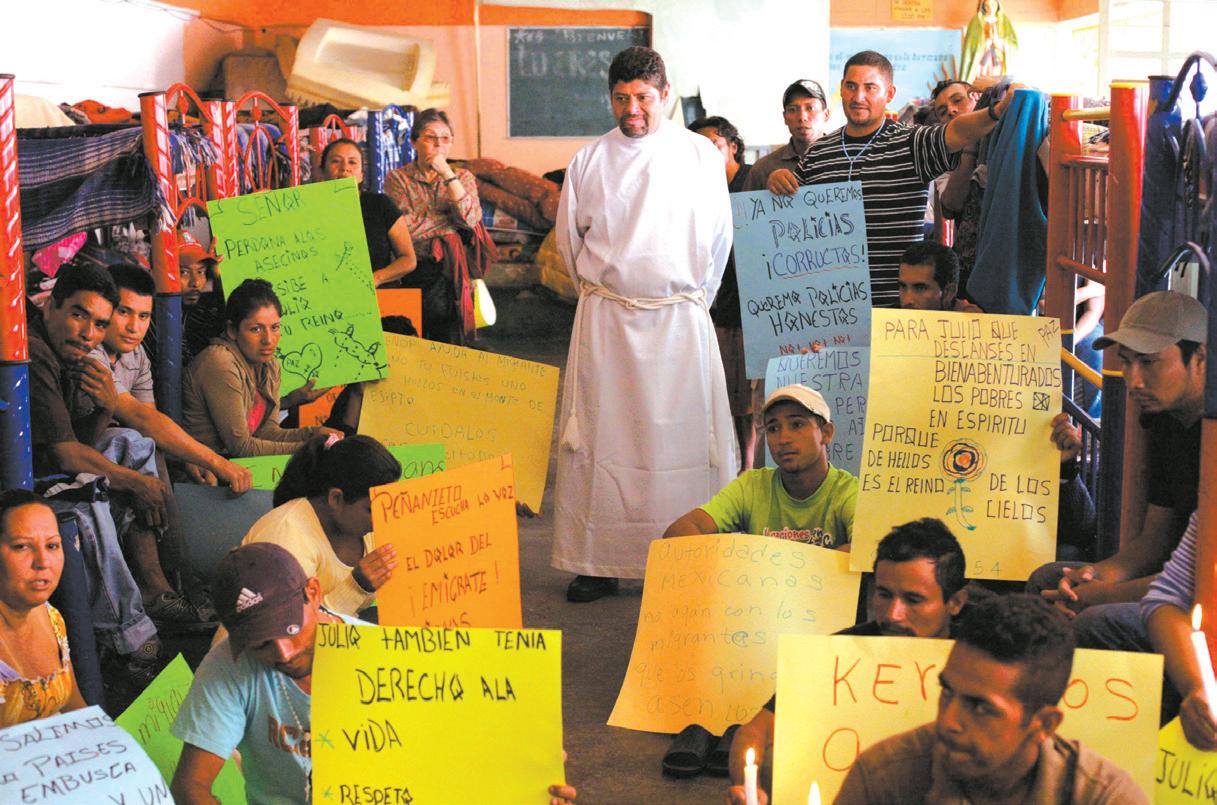
MEXICO CITY - Ricardo Salazar
Sanchez boarded a northbound bus in the central state of Guanajuato with 22 fellow residents for a journey to the US-Mexico border – and a subsequent attempt at crossing into Texas, where potential construction jobs awaited. The men, who left March 21, never arrived.
What happened to them is a mystery. In April, family members began suspecting the men ended up in the mass graves discovered on a ranch near the US border.
Salazar is just one of the hundreds who have been abducted or simply disappeared under mysterious circumstances since the Mexican government launched a crackdown on drug cartels and organized crime in December 2006.
Relatives’ searches are desper-
ate as the assailants leave few clues and almost never demand ransom payments. Making searches even more desperate are the attitudes of authorities, whom victims and their advocates say show scant interest in missing persons cases.
A group of families supported by the Catholic diocese of Saltillo voiced their frustrations during a meeting in Mexico City with the attorney general, Marisela Morales.
“Inside of this dynamic of violence and death, unattended by [the government], the victims of forced disappearances remain trapped,” said Saltillo’s Bishop Raul Vera Lopez.
The government’s drug-war policies, the bishop added, “have abandoned and denied at all cost the carrying out of judicial activities.”
Father Alan Camargo, a spokes-
man for the Diocese of Matamoros, which borders Brownsville, Texas, and contained the site of the mass graves, says stories of abductions have become common in his region.
“During Mass in some churches, they pray for the sick, those who have passed away and those who have disappeared,” he said.
The families of the men who disappeared after boarding buses still hold out hope their loved ones are alive. But help in resolving the cases has been lacking. The state government once sent a psychologist, but Veronica Coronilla, whose husband is among the missing, said her suggestions to move on and “forget” their loved ones had offended.
She recalled one person responding: “He’s not a chair or a piece of furniture you forget about.” CNS
The capsule containing blood from Blessed John Paul II on display for veneration at the apostolic nunciature in Mexico City. PhoTo: CNS/Carlo S Ja SS o, r eu T er SThe spectacle in Spain of an estimated two million youth converging on an airfield to be with, of all people, the head of the Catholic Church can only produce three possible reactions: indifference, joy or incomprehension.
The first is probably a fairly common reaction in a society which seems to have largely forgotten that there is a thing called a Gospel and therefore cannot appreciate its power to utterly transform the daily thoughts and lives of those who believe in it. This is the understandable, albeit quite narrow, mindset of a post-Christian society.
Joy is natural for those who, despite the vicissitudes and disappointments of life have, by the grace of God, received the gift of faith. Conscious that much of the course of the twentieth and twenty-first centuries has seen an apparently inexorable drift away from significant faith in the God of scripture and and the revealed, personal God who is Jesus Christ encountered in the Gospels, World Youth Day comes as uplifting confirmation that, like God, faith is not dead by a long chalk. More than this, it comes as a visible manifestation of the presence and action of the Holy Spirit in the Church and in the world. To see the multitudes of youth from all over the world gather to be with each other in companionship and communion with the Vicar of Christ and the Church and – above all – happy, is, seen through the eyes of faith, a deeply uplifting experience. World Youth Day demonstrates that it is entirely possible for Christian faith to be an informing spirit of the times. But for many sections of our contemporary society, World Youth Day can only be viewed with incomprehension. This is partly why the media which reports on it comprehends only that it is a large event because it can recognise a crowd when it sees one. Beyond that, the media remains unaware of the real drama that is playing out in front of its eyes. The incomprehensibility of World Youth Day, which is to be found principally among the media and dissident Catholics such as the the self-titled progressives or the lefebvrists, who are all very similar to one another, is that young people could ever find the institution of the modern Church to be relevant to their lives at all. One feels compassion for the self-titled progressives for whom the spectacle of World Youth Day must cause a particularly severe disturbance of the humours.
“The generations of the sixties and seventies who abandoned the Church have been fighting daddy ever since. World Youth Day is really all about generational change.”
PO Box 3075
Adelaide Terrace
Per T h WA 6832
office@therecord.com.au
Tel: (08) 9220 5900
Fax: (08) 9325 4580
Their problem originates, in a sense and to risk picking a year, with 1968. The answer as to why, in the middle of the northern hemisphere summer holidays, vast crowds of youth come to actually pray is that what is happening with World Youth Days is generational change. The generation of the sixties, or thereabouts, which embraced the spirit of the times and significantly abandoned the Church have been effectively fighting daddy ever since. In a real sense, they grew up empty and uninformed. But the young who come to World Youth Day, having encountered Christ and his Church, want to explore everything that this means. Their encounter with Christ, which they discover is exciting and inspirational, cannot possibly be read through the prism of the sixties and seventies when so many Catholics were persuaded that the Church was an effectively superseded organisation that believed in superseded ideas. What is yet to be seen is what effect the World Youth Day generations will have but, one imagines, it will be felt.
Unlike those before them, those who have flocked to World Youth Days (the first in Rome in 1985) have, above all, learned two things: belief in Christ as being who he said he was and in the community he founded which is called the Catholic Church is neither stupid nor ridiculous; secondly, and to the great shock of the generations of the sixties and seventies, sanctity is not only possible in modernity but a possibility for their own lives. Furthermore, Catholic faith can nurture a truly free society, human dignity and solidarity. No wonder they respond.
One only has to turn to the homily of the Vicar of Christ, Benedict XVI, at the vigil Mass in Madrid last weekend (see Page 9, this edition) to see why the future of the world thrills to the Christian Gospel. Faith, the Holy Father assured his audience, does not run counter to the ideals, hopes and aspirations that are at the heart of every young person’s life (although this has been the relentless message of the media and the tired hangers-on of the sixties and seventies). On the contrary, it elevates and perfects those ideals, hopes and aspirations. Faith, the Holy Father might almost have said, is what makes the fulfilment of every life possible - not its derailment.
World Youth Day is, in the end, also terribly subversive. In a real way it represents the insurrection of the young against the boring, banal and deadly vision of existence that is the spirit of the age and which seems to be so ascendent in our culture. World Youth Day is dangerous because it helps young people – and others – greatly in letting Jesus into their hearts and showing them that what they have been sold for decades by the media, their culture and a spent generation was never anything more than a counterfeit for getting a real life.
Your editorial of 10 August is timely, focusing on the family which, as you correctly suggest, is: “... economically under siege.” The rot set in with the advent of the Pill, the use of which enabled married couples to postpone having families until they considered they were in a financial position to do so.
Initially, however, use of the Pill was confined to those who were not of the Catholic faith or, indeed any faith. But the important thing to realise is that the group who used it represented a majority in the community.
As a result, most wives continued in employment long after their weddings which caused a major shift not only in societal attitudes and demographics, but also economically.
With more money at their disposal, married couples, where the wife was ‘on the Pill,’ were able thereby to bid up the price of commodities, especially land and housing. With escalating prices,
before the topic of contraception was either dropped from Catholic educational syllabuses or referred to obliquely. When did you last hear a homily in church dealing with the subject?
Humanae Vitae rightly pointed out that the consequences of this paradigm shift would be catastrophic. We are now reaping the whirlwind.
As it has done in the past, the Church must be in the vanguard of the movement to restore the family to its rightful place in society.
Dunstan and Margaret Hartley
Dianella WA
it was not uncommon for couples to postpone having families indefinitely, to the point where a family with no children was no longer considered unusual. How did Catholic families respond? They did the unthinkable and joined up with the values of popular culture rather than the teaching of the Church so that the proportion of Catholic women using the Pill is now indistinguishable from the rest of the community. It was only a matter of time
New research tells us something interesting about men and women but doesn’t really make the big picture any clearer, writes Russell Moore
ON the bedside table of a woman in your church, there’s a Christian romance novel and a Bible. Does that matter? On the Kindle or e-book reader of a teenage Christian woman in your parish youth group, there’s a “young adult” fiction bestseller. Should that concern you?
A new book by Boston University researchers Ogi Ogas and Sai Gaddam, A Billion Wicked Thoughts, offers a disturbing look at how Internet search engines reveal much about the sexual and emotional desires of men and women, and how they differ.
The research confirms in some ways what almost everyone knows: men are visually engaged, attracted to youth and sexual novelty, and are thus vulnerable to visual pornography.
The research explores further what the commercialised romance industry tells us about what it means to be a woman (at least in a fallen world).
Women are much less likely to be drawn to visual pornography (although more do so than one might think), but are quite likely to be involved in such media as Internet romantic fiction or the oldfashioned romance novel.
The romance novel follows, the researchers argue, a typical pattern. The hero is almost never, they say, a blue collar worker, a bureaucrat, or someone in the traditionally feminine occupations (hairdresser, kindergarten teacher, etc). He is competent, confident, and usually wealthy. He is, in short, an alpha male.
But, they argue, this alpha male is typically a rough character who learns to be tamed into kindness, kindness to her. Thus, you wind up with not only the strong silent cowboys with the soft interior life, but also these days vampires and werewolves and Vikings.
And all of this is moving toward the climax of the romance story: the “happily-ever-after.”
“Romance novels rarely have a sequel”, the book concludes. “Once the hero and heroine are joined in

love or matrimony, they get their Happily-Ever-After, presumably with a bevy of children and domestic bliss. Further adventures would violate the female fantasy of true, committed, eternal love.”
“Though there are many series of modern romance novels, once a couple gets their Happily-EverAfter in one book, they only resurface as beloved supporting characters in future books, with each subsequent book’s focus on a new hero or heroine.”
Of course, as they do with pornography, these scholars explain all of these archetypal female desires in a Darwinian need for the woman to seek out a mate who can be simultaneously monogamous and protective of the offspring. This evolutionary desire is seen in the strong male who pours out his feelings of devotion, and whose lifelong commitment is frozen in time and certainty in the HappilyEver-After moment.
While I don’t share all the presuppositions of these scholars, I think they’re on to something about the allure of the commercialised romance story. Pornography and romance novels aren’t (or at least aren’t always) morally equivalent, but they “work” the same way.
Both are based on an illusion. Pornography is based on
the illusion of a perfectly willing, always aroused partner without the “work” of relational intimacy. Often, romance novels or their film equivalents do the same thing for the emotional needs of women that pornography offers for the erotic urges of men.
And in both cases, what the “market” wants is sameness. Men want the illusion of women who look just like women but are, in terms of sexual response, just like men.
Women want the illusion of men who are “real” men but, in terms of a concept of romance, are just like women. In both artificial eros and artificial romance, there is the love of the self, not the mystery of the other.
Thankfully, we do not yet have a market for “Christian” pornography (but just wait, someone will find a way). But we do have a market for “Christian” romance novels. Now, some of those classified as such aren’t really “romance novels” at all.
They’re complicated looks at the human condition, especially male/female relationships, from a Christian vantage point.
A lot of this genre, though, is simply a Christianisation of a form not intended to enhance intimacy but to escape to an artificial illusion of it.
Granted, there’s no graphic sexuality here. The hero and heroine don’t sleep together; they pray together. But that’s just the point.
How many disappointed middleaged women in our congregations are reading these novels as a means of comparing the “strong spiritual leaders” depicted there with what by comparison must seem to be underachieving lumps lying next to them on the couch?
This is not to morally equate “romance novels” with the grave soul destruction of pornography. But it is worth asking, “Is what I’m consuming leading me toward contentment with my spouse (or future spouse) or away from it? Is it pointing me to the other in one-flesh union or to an eroticised embodiment of my own desires? Is this the mystery or a mirage?”
When the media try to inject abuse and cost into the WYD picture, they miss out big time, writes Tim Drake
MEDIa coverage before nearly every World Youth Day follows a pretty similar trajectory. It certainly did for each of the WYD events I covered (toronto, Cologne and sydney) and did so again in the lead-up to Madrid.
that trajectory is that the secular media trots out all of their negative stories: the clergy sexual abuse crisis; how the Church’s so-called traditional teachings are at odds with the culture at large; how the youth are disaffected and disconnected with the Church; and criticism of the costs for hosting WYD.
In the lead-up to WYD in sydney I wrote about the mainstream media’s struggle to understand WYD and predicted that once the media observed the enthusiasm, excitement and faith of the youth, the criticisms would die away.
at the time, the australian bishop in charge of organising WYD in sydney, anthony Fisher, suggested: “some organisations in particular
have used World Youth Day as a reason to bash the Church from the very beginning, when it was first announced ... It’s anti-Catholicism”.
He said he hoped, as the days went by, that would change: “We’re already seeing positive stories in the press. Yet there are some organisations that would prefer to report on a single pilgrim falling off the bus rather than reporting on the 200,000 who made it safely.”
Within days of the pope’s arrival, the full transformation took place, with nothing but positive headlines. the same thing had happened when Pope Benedict XVI visited Washington and New York earlier that year.
I saw the same pattern forming for WYD in Madrid. I did not cover the event this year but did see a very predictable report, by Daniel silva of news agency aFP, that the pope’s trip to spain had been criticised for its cost.
the story was widely syndicated, including by Voice of America and
The Irish Times. “ the cost of Pope Benedict XVI’s visit to spain next week is coming under fire from lay groups and even some priests as the country grapples with painful budget cuts,” the story said, reporting that a group of 100 priests from Madrid’s poorest parishes were criticising the visit, with some
the economy by 100 million euros. articles have also conveniently overlooked the charitable work being done by WYD and its attendees. For any journalist willing to look, they would have found a press release from the WYD Madrid press office about two social aid projects being carried out through
“This all calls to mind Judas’ complaint when Mary Magdelene anointed Christ’s feet with costly oil.”
planning to protest. this all calls to mind Judas’ complaint when Mary Magdalene anointed Christ’s feet with costly oil. Christ responded: the poor you will always have with you, but you will not always have me.”
Perhaps what is most alarming is how one-sided the coverage had been. None of the articles described what the influx of nearly a million visitors for a week or two does for the local economy. WYD officials estimated the event would boost
WYD – one for families at risk in Madrid, the other for young victims of violence and poverty in Brazil.
WYD organisers have cooperated with Caritas to build a residential complex in Madrid for families at risk of social exclusion. the complex will house 127 families. Likewise, in Brazil, opportunities are being made available for youth affected by poverty and violence.
Both projects were to be presented to WYD participants, encouraging them to assist through financial
donations and social networking. “ the formative aspect of World Youth Day would be incomplete if we failed to remind young people that their faith remains incomplete unless they help others, unless they are generous, unless they try to do something about changing what they see is wrong,” said Yago de la Cierva, executive director of World Youth Day.
Furthermore, many youth involved in WYD were engaged in charitable work. Madrid’s Highland school held a fundraiser and sent 2,500 euros to missions in Mexico. WYD’s s olidarity Fund made it possible for those in poor countries to attend WYD.
While the press might like the controversy, it is still tremendously one-sided in reporting the actual facts about WYD.
First published by the American journal National Catholic Register. Tim Drake is a senior writer with the NCR and author of six books, including Young And Catholic: The Face Of Tomorrow’s Church (Sophia Institute Press, 2004).
The experts don’t get it but millions of youth do, and there are important reasons why, writes Michael Cook
Last year at this time the Catholic Church was licking its wounds after its biggest public relations shellacking in many years. Newspaper columnists sneered that the scandal caused by a few priest paedophiles was the beginning of the end. Its followers were so disgusted they were turning in their membership cards.
But if that was true, how do you explain the presence of two million young people in Madrid over the weekend to listen to an 83-year-old German pope? they were all aware of the vile actions of a handful of rogue priests but these had not shaken their confidence in the Church or its leader.
Clearly, World Youth Day gave abundant reasons for hope. Here are seven.
the younger generation gets the Church: the two million youth who attended made an impressive effort to back up their convictions. While most came from spain and nearby France and Italy, there were hundreds, even thousands, from far away countries like australia and New Zealand. Contrast that with the World Youth summit organised by the United Nations in New York which drew only a few hundred.
Benedict XVI is setting the moral agenda: Britain’s Prime Minister David Cameron reacted to the riots in London and other big English cities by decrying moral relativism. “What last week has shown is that this moral neutrality, this relativism – it’s not going to cut it any more.” Exactly. a free set of steak knives if you can name the first major world figure to hammer away at the “tyranny of relativism”! the Pope has made it respectable to reject the political correctness which undermines moral striving. It looks like Cameron sat up and thought. His response to the riots came straight from Benedict’s playbook. a one-man think tank works for free: the New York Times film critic Neal Gabler last week lamented the death of in-depth thinking: “we are living in an increasingly post-idea world — a world in which big, thought-provoking ideas that can’t instantly be monetised are of so little intrinsic value that

fewer people are generating them and fewer outlets are disseminating them, the Internet notwithstanding. Bold ideas are almost passé.”
Gabler obviously hasn’t read much of Benedict XVI on morality, philosophy, aesthetics, economics and social responsibility. But many of the Pope’s young fans have. His ideas explode with possibilities. and they’re free.
a way out of the global financial crisis: Benedict got there first. With the world economy on the verge of meltdown, people
but an interior and fundamental dimension. the economy does not function with mercantile selfregulation alone, but it has need of an ethical reason to function for man.”
a thumbs-down to dehumanising sex and consumerism: the greatest question of the past 200 years is: what is true freedom? to do whatever I want? Or to live according to the truth? Our society offers young people the freedom to consume until their credit cards max out, to have sex whenever they want with whomever
with its possibilities and limitations. they see the prevailing superficiality, consumerism and hedonism, the widespread banalisation of sexuality, the lack of solidarity, the corruption. they know that, without God, it would be hard to confront these challenges and to be truly happy, and thus pouring out their enthusiasm in the attainment of an authentic life. But, with God beside them, they will possess light to walk by and reasons to hope, unrestrained before their highest ideals, which will motivate their generous com-
“Many young people are disillusioned with the South Park culture they live in and what the Pope says makes a lot of sense.”
are looking for answers. surely at the root of the crisis is something more than mismanagement of economic levers, statistics and money. that’s exactly what Benedict has been saying. as he told journalists in a press conference in the flight from Rome to Madrid: “[We see] confirmed in the present economic crisis what has already been seen in the great preceding crisis: that an ethical dimension is not something exterior to economic problems,
they want, to live undisturbed in a solipsistic bubble. But this vision of man degrades him, Benedict says. Happiness comes only from discovering the truth. Many young people are disillusioned with the South Park culture they live in and what the pope says makes a lot of sense to anyone who wants to build a better world. “ the discovery of the living God inspires young people and opens their eyes to the challenges of the world in which they live,
mitment to build a society where human dignity and true brotherhood are respected.” truth is more powerful than number-cruching: Benedict’s most memorable speech was to university lecturers at that jewel of architecture, El Escorial. as a professor himself, he spoke with passionate conviction about the need to offer students more than training in the nuts and bolts of professional work. “as Plato said: ‘seek truth while you are young, for if you do
not, it will later escape your grasp’. this lofty aspiration is the most precious gift which you can give to your students, personally and by example. It is more important than mere technical know-how, or cold and purely functional data.” Universities, he said, should be a sanctuary from ideology or “a purely utilitarian and economic conception which would view man solely as a consumer”. What could be more attractive than seeking the ultimate meaning in the universe and striving to understand what it means to be authentically human?
Utilitarianism is passé and Benedict offers an alternative. World Youth Day is still the world’s best-kept secret: a journalist friend of mine wrote an op-ed piece for a sydney newspaper. But the editor wasn’t interested. “We had one of those in sydney three years ago. that just about filled our quota,” he was told. The New York Times barely reported World Youth Day.
this is peculiar – a gathering of two million youth is not news, especially after a few hundred in the same age bracket trashed London? Isn’t anyone out there connecting the dots? the media and the intelligentsia are good at froth and bubble, but abysmal at deep undercurrents. Did they predict the rise of militant Islam, the disintegration of the soviet Union, the fizzing of the Population Bomb or the Global Financial Crisis? the biggest stories are hidden. Benedict XVI knows this. as he told journalists, “God’s sowing is always silent; it does not appear in the statistics, and the seed that the Lord sows with World Youth Day is like the seed of which the Gospel speaks: part falls on the road and is lost; part falls on stone and is lost; part falls on thorns and is lost; but a part falls on good earth and gives much fruit.”
Unnoticed by the media, two million young people have embarked upon a journey which will lead many of them to infuse their home countries with their deeply held Christian beliefs. slowly the world is going to change. thirty years from now, the media is going to have one hell of a surprise.
Michael Cook is editor of MercatorNet.
- www.mercatornet.com
Help WANT e D
Ruah Centre looking for towels
Ruah is a drop in centre for the homeless in Northbridge and is looking for a donation of towels. We offer showers to people who are living on the streets, go through a lot of towels, and are in need of them all the time. Enq: Megan 9328 5933.
SUNDAY, 28 AUGUST
First Malaysian Norbertine Canon in 900 year history
9.30am at St Joseph’s Priory Parish, 135 Treasure Rd, Queens Park WA 6107. The Norbertine Canons: celebrating the Feast of Our Holy Father, Augustine in a Solemn Mass in which Bro Christopher J Lim will profess Solemn Vows of the Order. Enq and RSVP: Tina 9458 2729 or 9451 5586.
Refugee Sunday Celebration
10.30am at Redemptorist Monastery, 190 Vincent St, North Perth. All are invited to join the Redemptorist Community on Refugee Sunday by celebrating Mass with the Sudanese Choir followed by a sausage sizzle in support of refugees who have made Australia their new home. Enq: Jeanette 9370 4690 or Fran 9328 8325.
TU e SDAY, 30 AUGUST
Day of Reflection (MMp)
10.30am at St Paul’s, 106 Rookwood St, Mt Lawley. Rosary, Holy Mass, celebrant and speaker Fr Tim Deeter, concluding at 2pm. Bring lunch to share. Tea and coffee provided. Enq: 9341 8082.
Spirituality and The Sunday Gospels
7-8pm at St Benedict’s School Hall, Alness St, Applecross. Is the cross a stumbling block for us? Accredited CEO; Faith Formation for ongoing renewal, presented by Norma Woodcock. Everyone is welcome. There will be a collection. Enq: 9487 1772 or www.normawoodcock. com.
TU e SDAY, 30 AUGUST TO THURSDAY, 8 S ep T e MB e R
27th Novena to Our lady of Good Health, Vailankanni
7pm at Holy Trinity Church, 8 Burnett St, Embleton. Mass, Novena and procession. 31 Aug, 7pm Novena and blessing of the children. 1 Sept, 7pm Novena and blessing of the sick and elderly. 2 Sept, 7pm Novena. 3 Sept, 6pm Exposition of the Blessed Sacrament, 7pm Mass. 4 Sept, 6pm Vigil Mass and Novena. Food Fete. 5-7 Sept, 7pm Novena. 8 Sept, 7pm Nativity of the Blessed Virgin Mary - Concelebrated Mass and candlelight procession. Enq: Office 9271 5528 or Gordon 9377 4472.
THURSDAY, 1 S ep T e MB e R
prayer in the Style of Taize
7.30-8.30pm at Our Lady of Grace Parish Church, 3 Kitchener St, North Beach. Prayer, song and silence in candlelight; the symbol of Christ the light of the world. Enq: 9448 4457 or 9448 4888. www.taize.fr.
FRIDAY, 2 S ep T e MB e R
World Youth Day experience Sharing
7pm at Star of The Sea Parish Hall, 2 McNeil St, Cottesloe. Fr Rodrigo, together with two young people of the parish, would like to share their experience of the World Youth Day in Madrid, Spain. For this, Fr Freddy and Fr Rodrigo invite all young adults to join them for that evening. Light refreshments will be provided.Enq: Fr Freddy/Fr Rodrigo 9384 2421.
Catholic Faith Renewal evening
7.30pm at St John and Paul’s Parish, Pinetree Gully Road, Willetton –Songs of Praise, sharing by Fr Sean Fernandez on “Creation and Evolution” followed by Thanksgiving Mass and light refreshments. You are all welcome to attend and we encourage you to bring your family and friends. Enq: Kathy 9295 0913, Ann 0412 166 164.
prolife Witness
9.30am at St Brigid’s Midland. Mass, followed by Rosary procession to the nearby abortion clinic led by the Franciscan Friars of the Immaculate. Please join us to pray for an end to abortion and the conversion of hearts. Enq: Helen 9402 0349.
SATURDAY, 3 S ep T e MB e R
Day with Mary
9am-5pm at Our Lady Help of Christians Church, cnr Camberwell and Berwick Sts, East Victoria Park. Day of prayer and instruction based on the Fatima message. 9am Video; 10.10am Holy Mass; Reconciliation, Procession of the Blessed Sacrament, Eucharistic Adoration, Sermons
The Record reserves the right to decline any items submitted for publication in Panorama. The Record reserves the right to edit any items submitted for publication in Panorama. The deadline for submission on Panorama items is: 11am every Monday.
Peter Rosengren Editoron Eucharist and Our Lady by His Grace, Archbishop Barry Hickey, Rosaries and Stations of the Cross. BYO lunch. Enq – Franciscan Sisters of the Immaculate 9250 8286.
Vigil for life
8.30am at St Augustine’s, Gladstone St, Rivervale. Mass, followed by Rosary procession and vigil at nearby abortion clinic led by Fr Paul Carey SSC. Weekly prayer vigils: Monday, Thursday and Saturday 8.30-10.30am. Please join us to pray for the conversion of hearts and an end to abortion. Enq: Helen 9402 0349.
SUNDAY, 4 S ep T e MB e R
Vespers and Benediction
4pm at St Mary’s Cathedral. The Anglican Dean of Perth, Dr John Shepherd, will preach vespers, followed by Benediction and Mass at 5pm. St Charles’ seminarians and the cathedral choir will participate. All invited to this important ecumenical service.
Divine Mercy
1.30pm at St Francis Xavier Church, 25 Windsor St, Perth. The main celebrant will be Fr Joseph Asnaban. The homily will be ‘The Seven Sorrows of Our Lady’. Exposition of the Blessed Sacrament, Divine Mercy prayers, followed by Veneration of First Class Relic of St Faustina Kowalska. Refreshments later. Enq: John 9457 7771.
W e DN e SDAY, 7 S ep T e MB e R
Women on the Fringe– Male and female actors and crew required
7pm at St Simon Peter’s Parish Centre, cnr Prendiville Ave and Constellation Dr, Ocean Reef. The first reading of this play was written by Gerald Searle of St Anthony’s, Wanneroo. No experience needed. The play will be staged September 2012: marginalised women because of gender, race and nationality, religion and moral standing – and transformed when encountered Jesus. Enq: Gerald 9404 7292.
SATURDAY, 10 S ep T e MB e R
Anglican Ordinariate Group
11am at Holy Cross Tide in the courtyards of Notre Dame University, Fremantle. All welcome to pray the Stations of the Cross. Enq: Fr Ted Wilson 0349 5798 or Br Harry on 0417 180 145.
“Mary, Blessed Among All Women” - Catholic Women’s Day Retreat
9am-3pm at St Brigid’s Parish, 69b Morrison Rd, Midland. Day of reflection, prayer and spiritual enlightenment with the Franciscan Friars and Sisters of the Immaculate. Spiritual director Fr Joseph. Lunch provided. Registration by 1 September. Enq: Lydia 0413 993 987 or catholicwomen.perth@gmail.com.
Divine Mercy Healing Mass
2.30pm at St Francis Xavier Church, 25 Windsor St, East Perth. Main celebrant Fr Marcellinus Meilak OFM. Reconciliation in English and Italian will be offered. Divine Mercy prayers followed by Veneration of First Class Relic of St Faustina Kowalska. Refreshments afterwards. Enq: John 9457 7771.
S UNDAY, 11 Sep T e MB e R
The World Apostolate of Fatima
3pm at St Mary Mackillop Church, cnr Pelican Pde and Cassowary Dr, Ballajura. All welcome for Eucharistic Hour. Pilgrim Virgin Statue will be present. Enq: 9339 2614.
Spring Concert
2pm at Queen of Apostles Church, 57 Tudor Ave, Riverton. Featuring Dominic Perissinotto, Pavithra Silva, Kathleen How, Rossmoyne SHS Year 11 Chorale and more. Entry by donation. Proceeds will go towards the Riverton Parish music ministry and upkeep of the parish pipe organ. Tea provided. For catering purposes RSVP to parish office 9354 0707.
FRIDAY, 16 S ep T e MB e R
Healing Mass and eucharistic Adoration
7-10pm at Holy Family Parish, 375 Alcock St, Maddington. Led by Fr Augustine Vallooran VC, Director of Divine Retreat Centre, Potta, India.
SATURDAY, 17 S ep T e MB e R
love Ministry Healing
6pm at Our Lady of Mercy, cnr Girrawheen Ave and Patrick Ct, Girrawheen. Love Ministry Healing team including Fr Nishan and other clergy. All welcome, come and be prayed over, healed from the past or present issues or stand in for a loved one who may be ill or facing problems at this time. Enq: Fr Hugh Thomas or Gilbert on 0431 570 322.
St padre pio pilgrimage to Toodyay and Anniversary of St Francis Stigmata 8am buses depart. 10.15 DVD, 11.30am Mass, confession available. 1pm lunch BYO, tea and coffee provided. 2.30pm Eucharistic Procession, Rosary, Adoration, Divine Mercy and Benediction. 4pm depart for Perth. Enq: Midland, Catrina, 9255 1938; Bassendean, Ivana 9279 7261; Morley, Joan 9276 9439; Leederville, Leena 9444 3617; Balcatta, Rosa 9276 1952; Glendalough, Fr Doug 9444 6131; Victoria Park and Girawheen, Nita 9367 1366.
One-Day Healing Retreat
9am-5pm at Holy Family Parish, 375 Alcock St, Maddington. Led by Fr Augustine Vallooran VC, Director of Divine Retreat Centre, Potta, India. BYO lunch.
SUNDAY, 18 S ep T e MB e R
Healing Service
7-9.30pm at Our Lady of the Mission Parish, Whitfords, 270 Camberwarra Dr, Craigie. Led by Fr Augustine Vallooran VC, Director of Divine Retreat Centre, Potta, India.
75th Anniversary Celebrations
9.30am at St Francis Xavier Church, 25 Windsor St, Perth. Mass. Past parishioners, ex-pupils of SFX School are cordially invited. Enq: Barbara 0401 178 782 or Roseanne 0434 899 406.
S UNDAY, 16 O CTOB e R
50th Anniversary
Beacon’s St Michael’s Catholic Church- Lord of the Harvest Parish. 10.30am at the Beacon Country Club. Mass followed by lunch. All past and present parishioners and ex-locals are invited. Please RSVP Michelle Kirby, c/- PO Beacon, 9686 6056, email: bingarra@bigpond.com.
S ATURDAY, 29 O CTOB e R
Mercedes College perth - Graduating Class of 1990 Reunion
7.30pm Rosie O’Grady’s, Northbridge, cnr James and Milligan Sts. Enq: kathleen.bryce@yahoo.com.au.
F RIDAY, 11 TO T U e SDAY, 22 N OV e MB e R pilgrim Tour To The Holy land Jordan, Israel and Egypt. Spiritual Director: Fr Sebastian Kalapurackal VC from St Aloysius Church, Shenton Park. Enq: Francis – Coordinator, 9459 3873 or 0404 893 877 or Skype ID: perthfamily.
MONDAY, 9 JANUARY TO MONDAY, 16 JANUARY 2012
Summer School
The Royal School of Church Music in Australia (RSCM) will be hosting a Summer School for all denominations next year. The programme will include workshops for church musicians and singers to help them inspire their congregations towards a more enjoyable and meaningful participation in church liturgy. Enrolments are now open and interested parties can find out more by going to www.rscmaustralia.org.au.
SATURDAY, 25 F e BRUARY 2012
A reunion for Holy Cross primary School, Kensington
Any ex-students or family members, please contact Julie Bowles (nee O’Hara) on 9397 0638 or email jules7@iinet. net.au.
eV e RY S UNDAY
Gate of Heaven Catholic Radio
Join the Franciscans of the Immaculate from 7.30-9pm on Radio Fremantle 107.9FM for Catholic radio broadcast of EWTN and our own live shows. Enq: radio@ausmaria. com.
pilgrim Mass - Shrine of the Virgin of the Revelation
2pm at Shrine, 36 Chittering Rd, Bullsbrook. Commencing with Rosary followed by Benediction. Reconciliation is available before every celebration. Anointing of the Sick administered during Mass every second Sunday of the month. Pilgrimage in honour of the Virgin of the Revelation, last Sunday of the month. Side entrance to the church and shrine open daily between 9am-5pm. Enq Sacri 9447 3292.
e V e RY FIRST SUNDAY
Divine Mercy Chaplet and Healing prayer
3pm at Santa Clara Church, 72 Palmerston St, Bentley. Includes Adoration and individual prayer for healing. Spiritual leader: Fr Francisco. All welcome. Enq: Fr Francisco 9458 2944.
Divine Mercy
1.30pm at St Francis Xavier Parish, 25 Windsor St, East Perth. Main celebrant: Fr Alphonsus. Includes Exposition of the Blessed Sacrament and Reconciliation, Holy Rosary, Chaplet of Divine Mercy and Divine Mercy prayers. Followed by Benediction and Veneration of First Class Relics of St Faustina Kowalska. Refreshments afterwards. Enq: John 9457 7771.
e V e RY S e COND SUNDAY
Healing Hour for the Sick
6pm at St Lawrence Parish, 392 Albert St, Balcatta. Begins with Mass, Exposition of the Blessed Sacrament and prayers. Enq: Fr Irek 9344 7066 or ww.stlawrence. org.au.
e V e RY THIRD SUNDAY OF TH e MONTH
prayer in style of Taize during August and September
7-8pm at Sisters of St Joseph’s Chapel, 16 York St, South Perth. Chapel doors open at 6.30pm. Everyone welcome to come along for prayer, using songs from Taize in the stillness of a candlelit chapel. Remembering Mary MacKillop Feast day. Mary MacKillop merchandise and books for sale in the Mary MacKillop Centre. Enq: Sr Maree Riddler 0414 683 926.
Oblates of St Benedict Meeting
2pm at St Joseph’s Convent, York St, South Perth. For all interested in studying the rule of St Benedict and its relevance to the everyday life of today for laypeople. Afternoon tea provided. Enq: Secretary 9457 5758. eV e RY F OURTH S UNDAY OF TH e M ONTH
Holy Hour for Vocations to the priesthood, Religious life
2-3pm at Infant Jesus Parish, Wellington St, Morley. The hour includes Exposition of the Blessed Eucharist, silent prayer, scripture and prayers of intercession. Come and pray that those discerning vocations to the priesthood or religious life hear clearly God’s loving call to them.
St Mary’s Cathedral Youth group – fellowship with supper
5pm at Mary’s Cathedral, 17 Victoria Sq, Perth. Begins with Youth Mass followed by fellowship downstairs in parish centre. Bring a plate to share. Enq: Bradley on youthfromsmc@gmail.com.
e V e RY MONDAY
evening Adoration and Mass
7pm at St Thomas Parish, Claremont, cnr Melville St and College Rd. Begins with Adoration, Reconciliation, Evening Prayer and Benediction, followed by Mass and Night Prayer at 8pm. Enq: Kim 9384 0598, claremont@ perthcatholic.org.au.
eV e RY T U e SDAY
Bible Teaching with a difference
7.30pm at St Joachim’s parish hall, Shepparton Rd,

ACROSS
2 People St Patrick converted
6 Transport for Peter and Andrew
8 OT book about a Jewish heroine
9 Friend of St Francis of Assisi
10 He knocked down the Philistine temple
11 Type of sin
13 Ecclesiastical court
15 ___ of Prague
17 Ecclesiastical hat
19 Certain Sunday
22 It was built by Solomon
24 “…___ thy help or sought thy intercession…” (Memorare)
27 Elder son of Joseph
29 Apostle number
31 “Ave ___”
32 NT book that follows John
33 Grandmother of Timothy
34 Jewish month of Passover
DOWN
1 Paul preached in Minor
2 Long sleeveless vestment
3 Catholic singing group, The Sisters
4 Thomas Aquinas is patron saint of these Catholic institutions
5 St Peter’s, for one
6 Tenet
7 Jesus’ name for the Father
10 Day dedicated to Marian devotions (abbr)
28 S 22ND SUNDAY IN ORDINARY TIME
Gr Jer 20:7-9 A laughing-stock
Ps 62:2-6,8-9 My soul is thirsting
Rom 12:1-2 Holy sacrifice
Mt 16:21-27 He will reward each one
29 M The Beheading of John the Baptist, martyr (M)
Red Jer 1:17-19 All command you
Ps 70:1-6.15,17 Pay heed to me
Mk 6:17-29 Gave a banquet
30 Tu 1Th 5:1-6.9-11 Stay wide awake
Gr Ps 26:1,4,13-14 Whom shall I fear?
Lk 4:31-37 Come out of him!
12 His wife was turned to salt
14 “And I will you up on eagle’s wings”
16 ___ Dame
18 “For where your is, there will your heart be also” (Mt 6:21)
20 Type of priest
21 He left sad when Jesus told him to sell all he owned
22 Catholic newsman Russert, former host of “Meet the Press”
23 David is said to have written some of these
25 John was on this island
26 A parish position (abbr)
28 “And with you”
30 Arizona-Vatican connection
Last week’s so L ution

31 W Col 1:1-8 Christ’s servant
Gr Ps 51:10-11 A growing olive tree
Lk 4:38-44 Preaching continued
1 Th Col 1:9-14 Good actions
Gr Ps 97:2-6 God’s truth and love
Lk 5:1-11 Two boats filled
2 F Col 1:15-20 Christ the head
Gr Ps 99:2-5 We belong to God
Lk 5:33-39 Eating and drinking
3 S St Gregory the Great, pope, doctor of the Church (M)
Wh Col 1:21-33 You are reconciled
Ps 53:3-4.6.8 Hear my prayer
Lk 6:1-5 Have you not read?
Continued on from Page 18
Victoria Park. Exciting revelations with meaningful applications that will change your life. Novena to God the Father, followed by refreshments. Bring Bible, a notebook and a friend. Enq: Jan 9284 1662.
Novena to Our Lady of the Miraculous Medal 6pm at the Pater Noster Church, Marmion and Evershed Sts, Myaree. Mass at 5.30pm followed by Benediction. Enq: John 0408 952 194.
Ev ERY W EDNESDAY
Holy Spirit of Freedom Community
7.30pm at The Church of Christ, 111 Stirling St, Perth. We are delighted to welcome everyone to attend our Holy Spirit of Freedom Praise Meeting. Enq: 0423 907 869 or hsofperth@gmail.com.
Holy Hour at Catholic Youth Ministry 6pm at 40A Mary St, Highgate, Catholic Pastoral Centre. 5.30pm Mass followed by $5 fellowship supper. Enq: Stefania 9422 7912 or www.cym.com.au.
Bible Study at Cathedral
6.15pm at Mary’s Cathedral, 17 Victoria Sq, Perth. Deepen your Faith through reading and reflecting on Holy Scripture by Fr Jean-Noel. Meeting room beneath cathedral. Enq: Marie 9223 1372.
E v ERY FIRST WEDNESDAY
Holy Hour prayer for Priests
7.30-8.30pm at Holy Spirit Parish, 2 Keaney Pl, City Beach. All welcome. Enq: Linda 9341 3079.
Religious PRoducts
CatholiCs Corner Retailer of Catholic products specialising in gifts, cards and apparel for Baptism, Communion and Confirmation. Ph 9456 1777. Shop 12, 64-66 Bannister Rd, Canning Vale. Open Mon-Sat. ri C h harV est Y o U r Christian shop Looking for Bibles, CDs, books, cards, gifts, statues, Baptism/Communion apparel, religious vestments, etc? Visit us at 39 Hulme Ct (off McCoy St), Myaree. Ph 9329 9889 (after 10.30am Mon to Sat). We are here to serve.
Kinlar VestMents
Quality handmade and decorated vestments: Albs, Stoles, Chasubles, Altar linen, banners, etc. 12 Favenc Way, Padbury. By appointment only. Ph Vickii on 9402 1318, 0409 114 093 or kinlar.vestments@gmail.com.
all areas Competitive Rates. Mike Murphy Ph 0416 226 434.
settlements are YoU bUYing or selling real estate or a business?
Why not ask Excel Settlements for a quote for your settlement. We offer reasonable fees, excellent service and no hidden costs.
Deadline:
11am Monday
Ring Excel on 9481 4499 for a quote. Check our web site on www.excelsettlements.com.au.
lose Weight safely. Ongoing follow-up. Michael 0412518318.
b rendan h and YM an serViCes Home, building maintenance, repairs and renovations. NOR. Ph 0427 539 588. pr opertY MaintenanCe
Your handyperson. No job too small. SOR. Jim 0413 309 821.
briCK re-pointing Ph Nigel 9242 2952.
perrott painting pty ltd
For all your residential, commercial painting requirements. Ph Tom Perrott 9444 1200.
piCasso painting Top service. Ph 0419 915 836, fax 9345 0505.
laWn moWing
Wrr laWn MoWing & Weed spraYing Garden clean ups and rubbish removal. Get rid of bindii, jojo and other unsightly weeds. Based in Tuart Hill. Enq 9443 9243 or 0402 326 637.
sPace Wanted
spaCe to store iteMs
A Catholic gentleman of senior

years, now in a retirement home, seeks approximately 2 or 3 square metres of space, such as a cupboard or small Garden shed, to store items unable to be kept where he now resides. Preferably in Mount Lawley, North Perth, Highgate or Leederville area. Rental on space negotiable. Please phone 9228 0469 mobile 0416 031 099.
Book Binding
neW booK binding, General Book Repairs; Rebinding; New Ribbons; Old Leather Bindings Restored.Tydewi Bindery 0422 968 572.
aches, Pain, stRess
re FleX relaX Massage
Mature Indian Masseur
Jai: 0438 520 993.
accommodation
holidaY aCCoMModation
ESPERANCE 3 bedroom house f/furnished Ph 08 9076 5083.
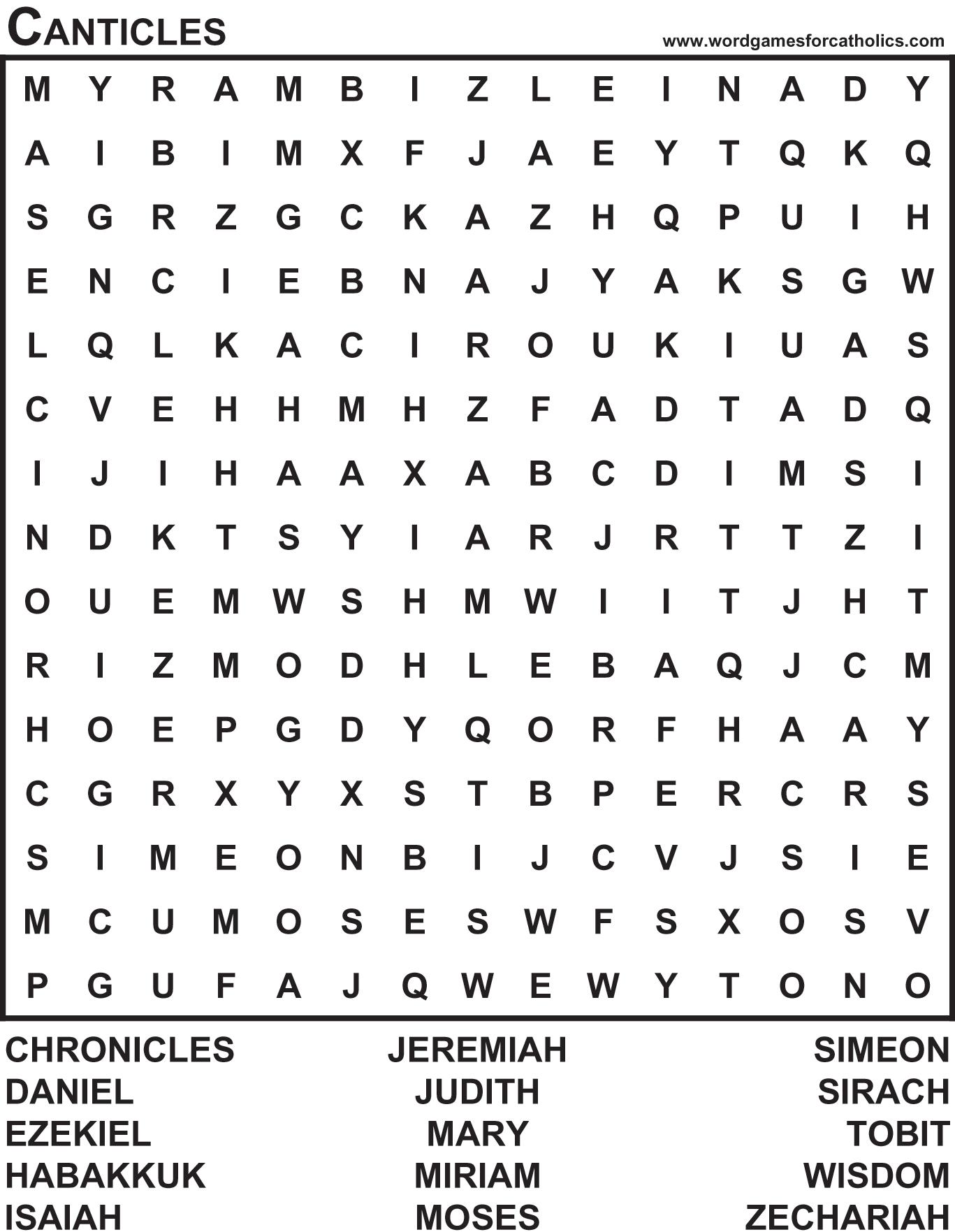


Jo Parry
RRP $23
This striking 400-page Bible, written for fiveto seven-year-olds, introduces young readers to approximately 50 Bible stories, each around eight pages in length, designed to be engaging and ageappropriate. Arranged in chronological order and with scripture references throughout, this instant favourite is brought to life by artist Jo Parry, illustrator of the Candle Read and Play series. Perfect for graduates of the Candle Bible for Toddlers
Katie Thompson
RRP $50
Catechists and teachers will find here an abundance of material for making the Sunday Gospels come to life for their students. This wonderfully illustrated and fun-to-use resource follows the Gospels for every Sunday of the three-year Lectionary, as well as for the major feasts of the liturgical year. Each double-sided activity sheet reinforces the Sunday Gospel message with pictures and number puzzles, word games, quizzes and codes.
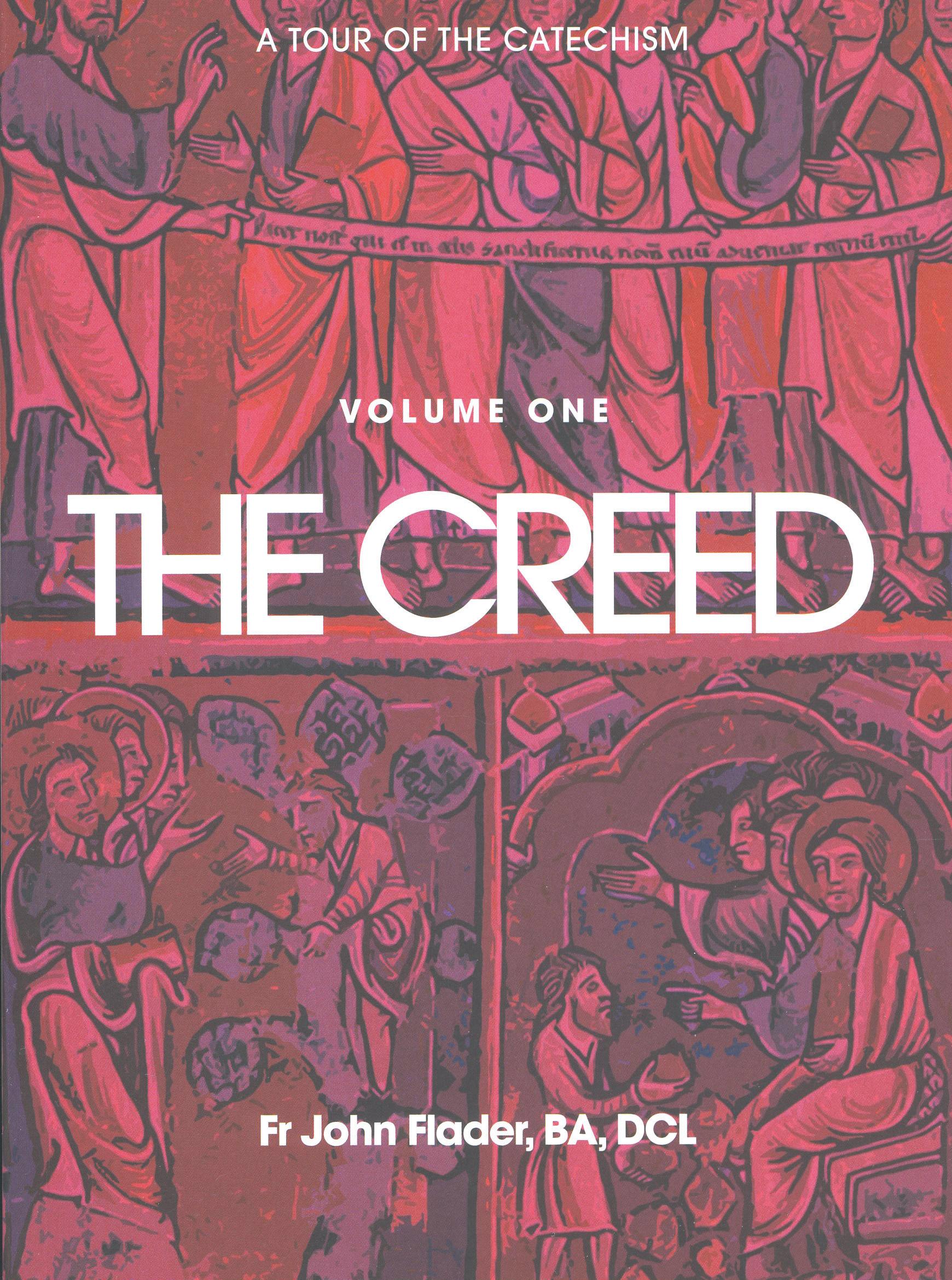
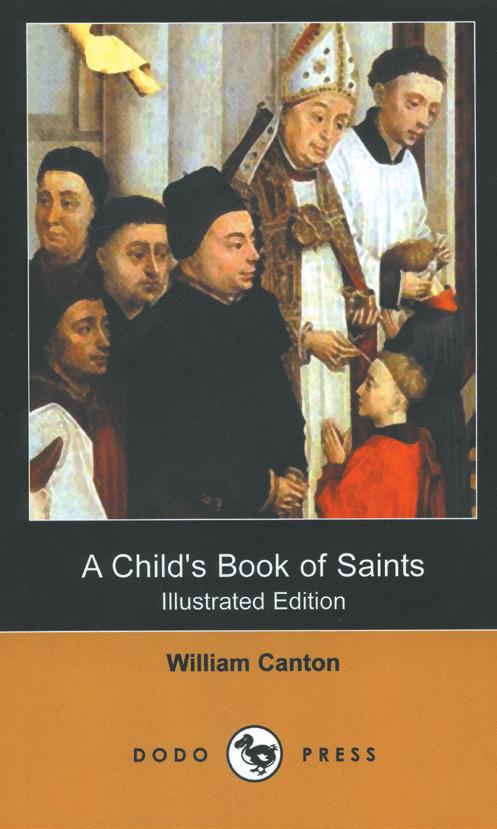

William Canton
RRP $25
Written in beautiful archaic language of a bygone age: “Then Hillary and his companions fared away into the north, through the Grey Waste ... where in olden time vast armies had passed with fire and sword and now the field had turned into wildwood and morass ... and had been given for a lodging to the savage beasts.”
William Canton (1845-1926) was a British journalist and writer, now best known for his contributions to children’s literature.
RRP $14
A magnificent full-colour book about the saints, featuring a full-page illustration of each saint.
The Catechism of the Catholic Church is a comprehensive, authoritative statement of the Church’s teachings but how easy is it to understand? Fr Flader unpacks the essentials and explains them in a way that everyone can understand. The book is a must for all those who want to know what the Church teaches, both for their own benefit and for the benefit of others: teachers, catechists, parents, converts and students of all kinds. One of the main attractions of the book is its direct, conversational style, its personal and deeply human character.
“Fr Flader has shone a light on the first section of The Catechism of the Catholic Church and revealed its treasures. In this treatment of the Apostles Creed, the reader will find insights from science and philosophy that help the modern mind to understand the truths of the Faith in a very satisfying and clear way. I welcome this book, which brings reason and faith together so effortlessly.”
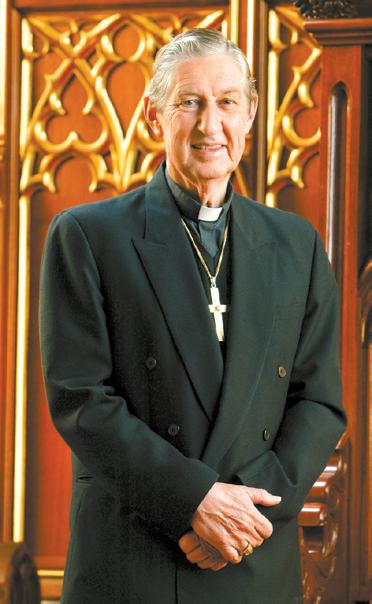
Most Rev B J Hickey DD, Archbishop of Perth
Email: